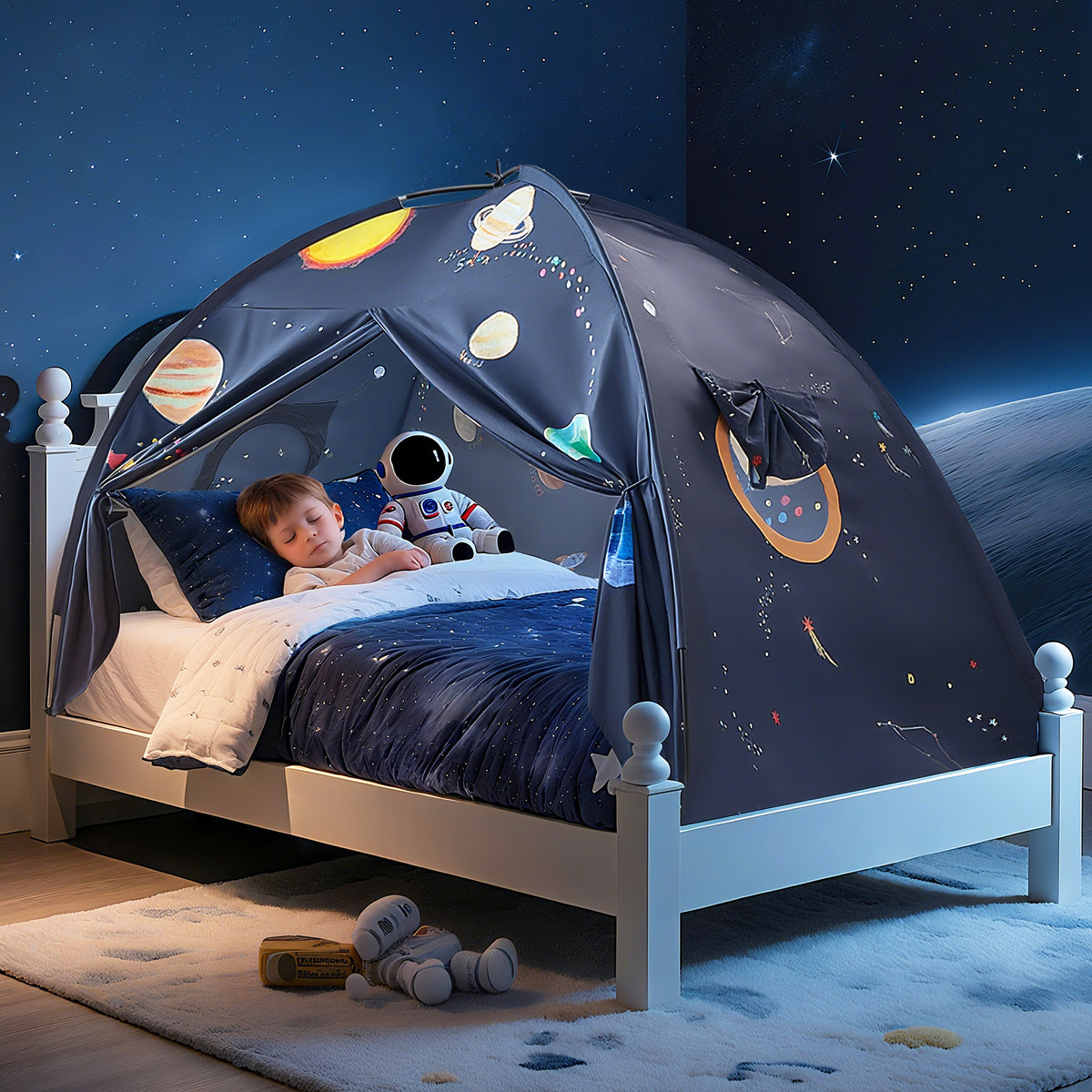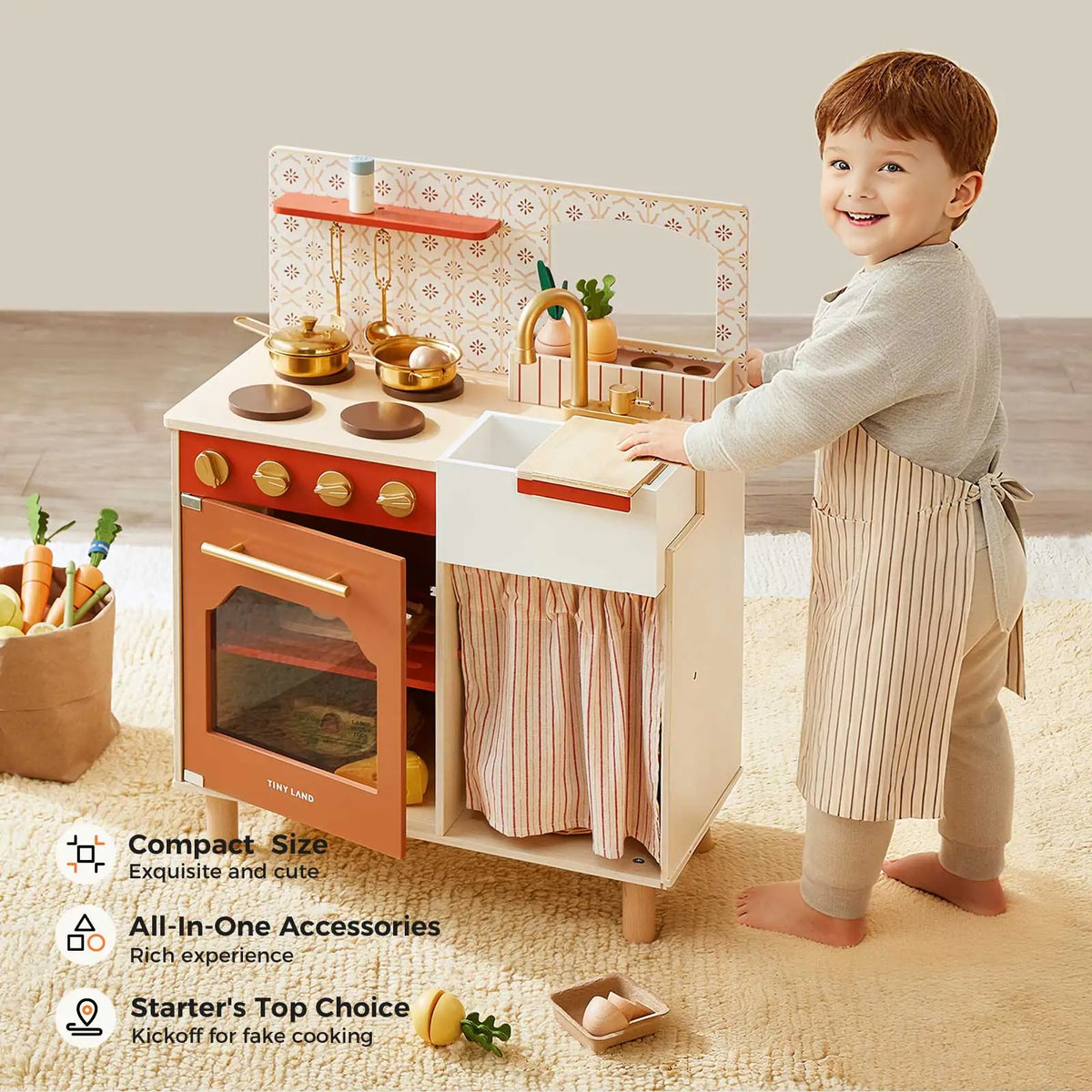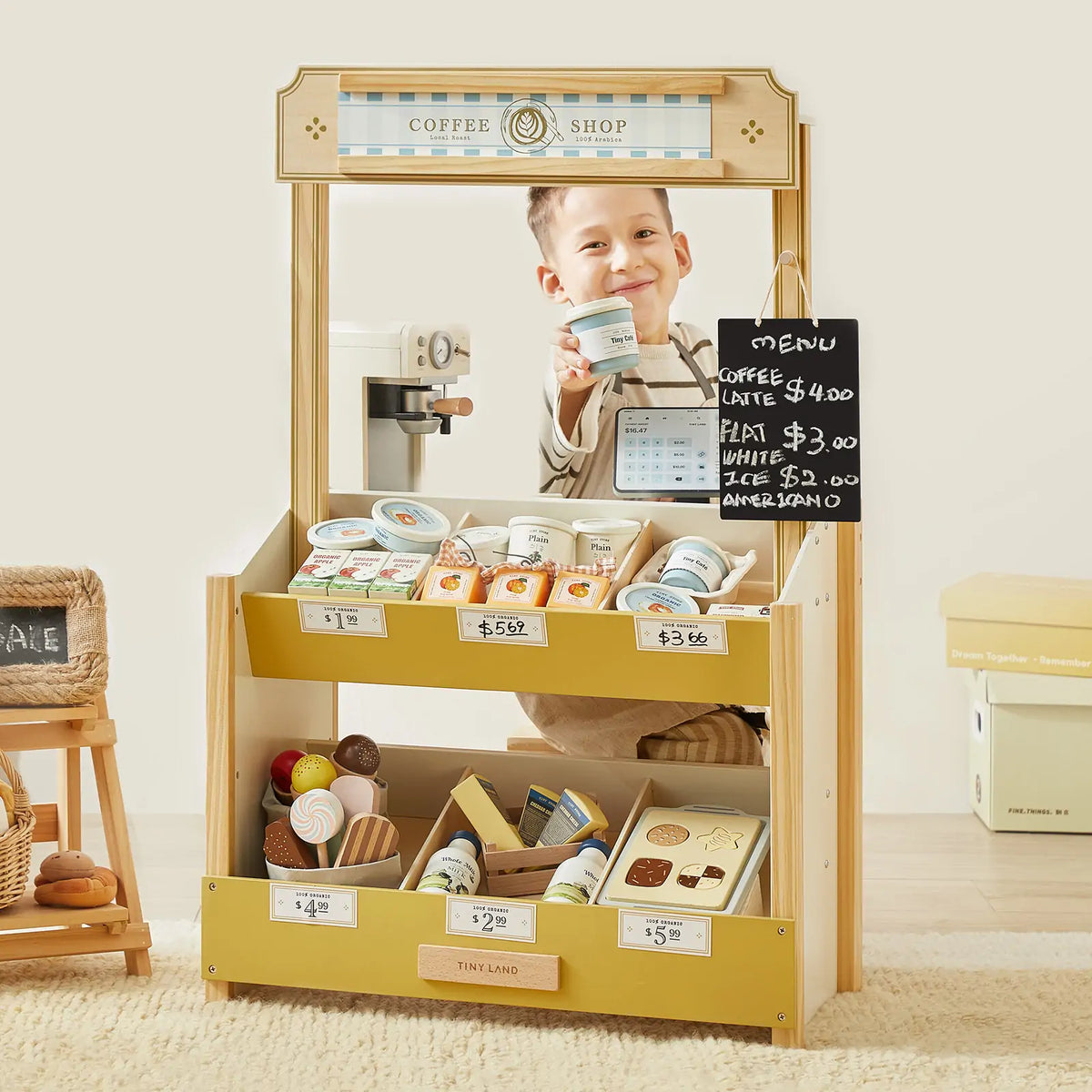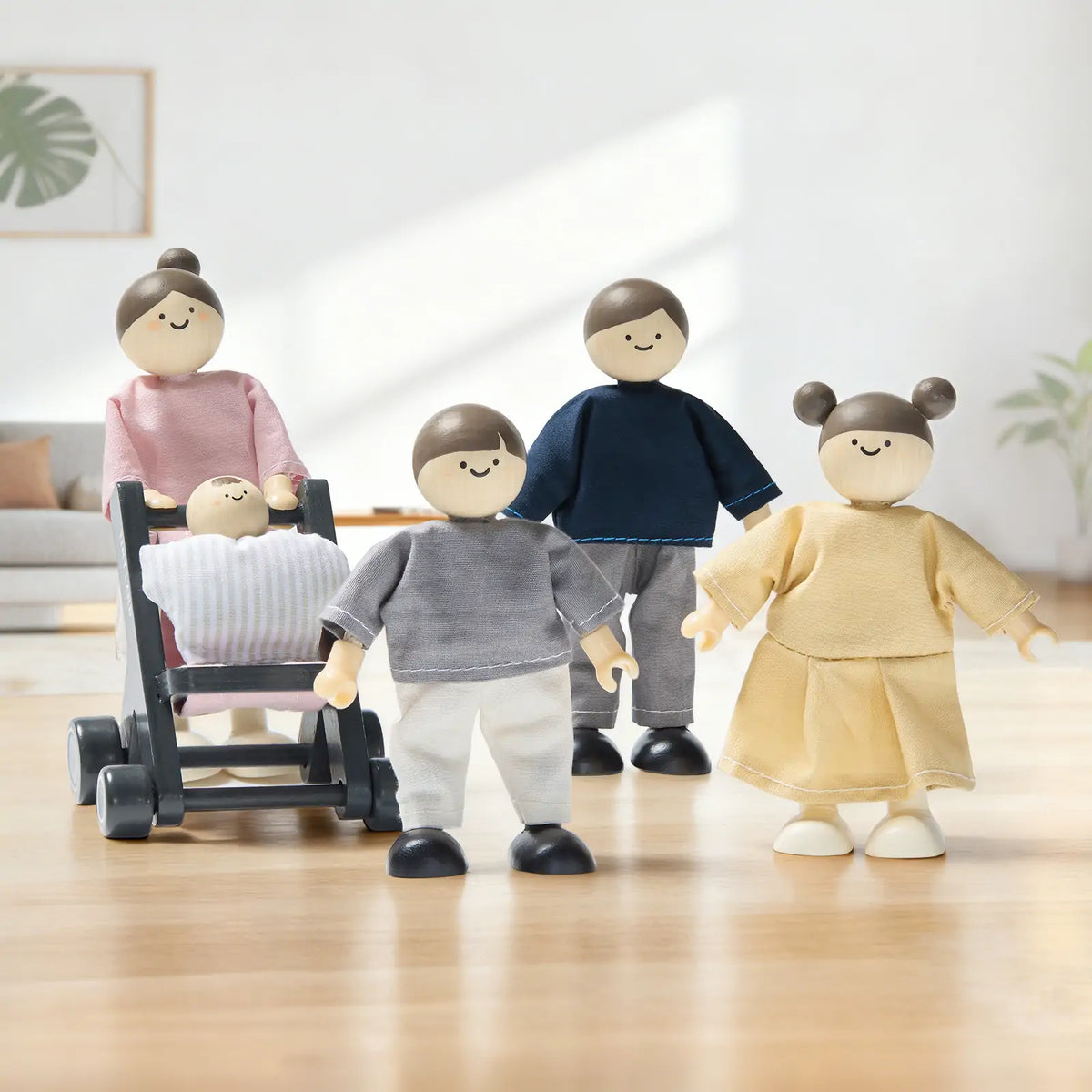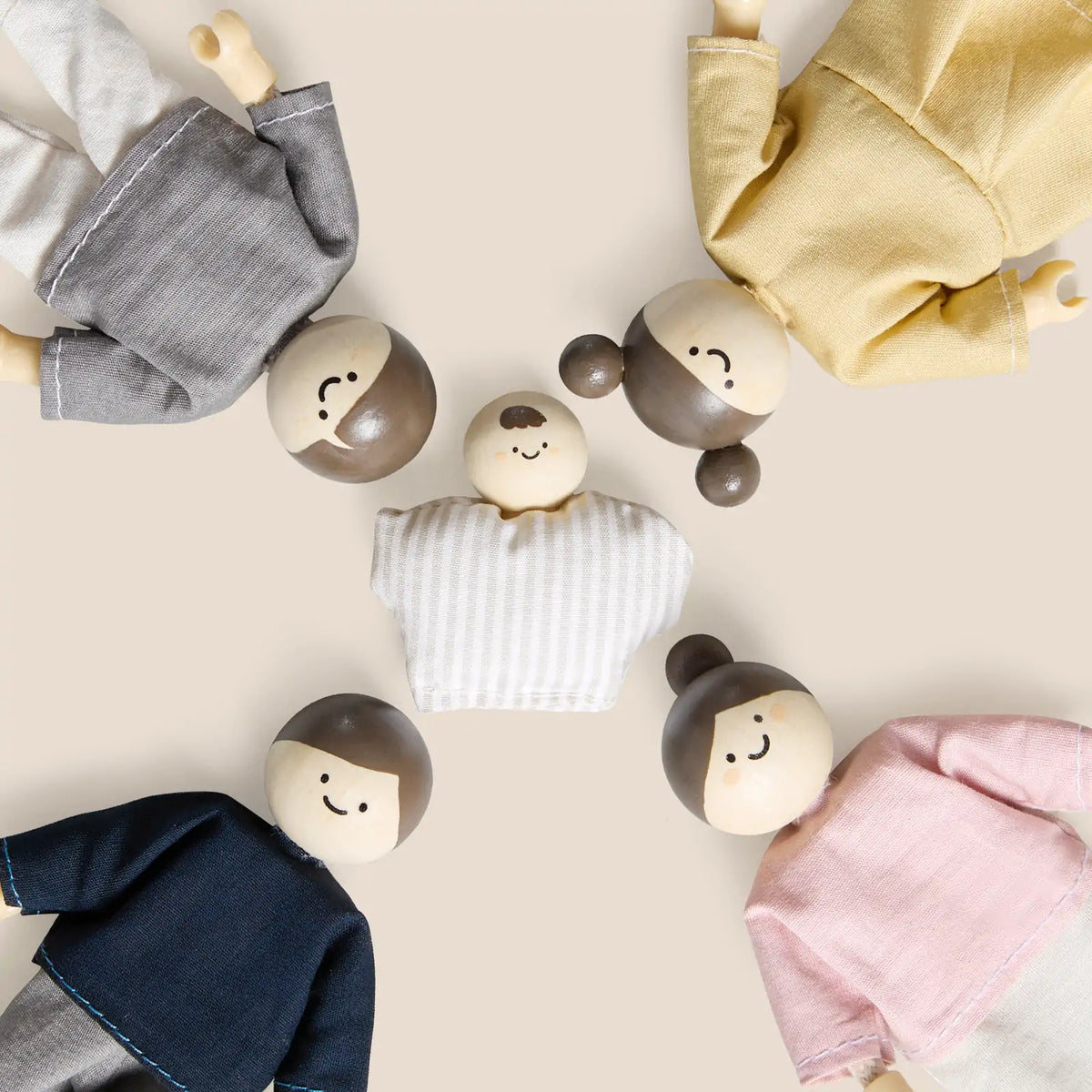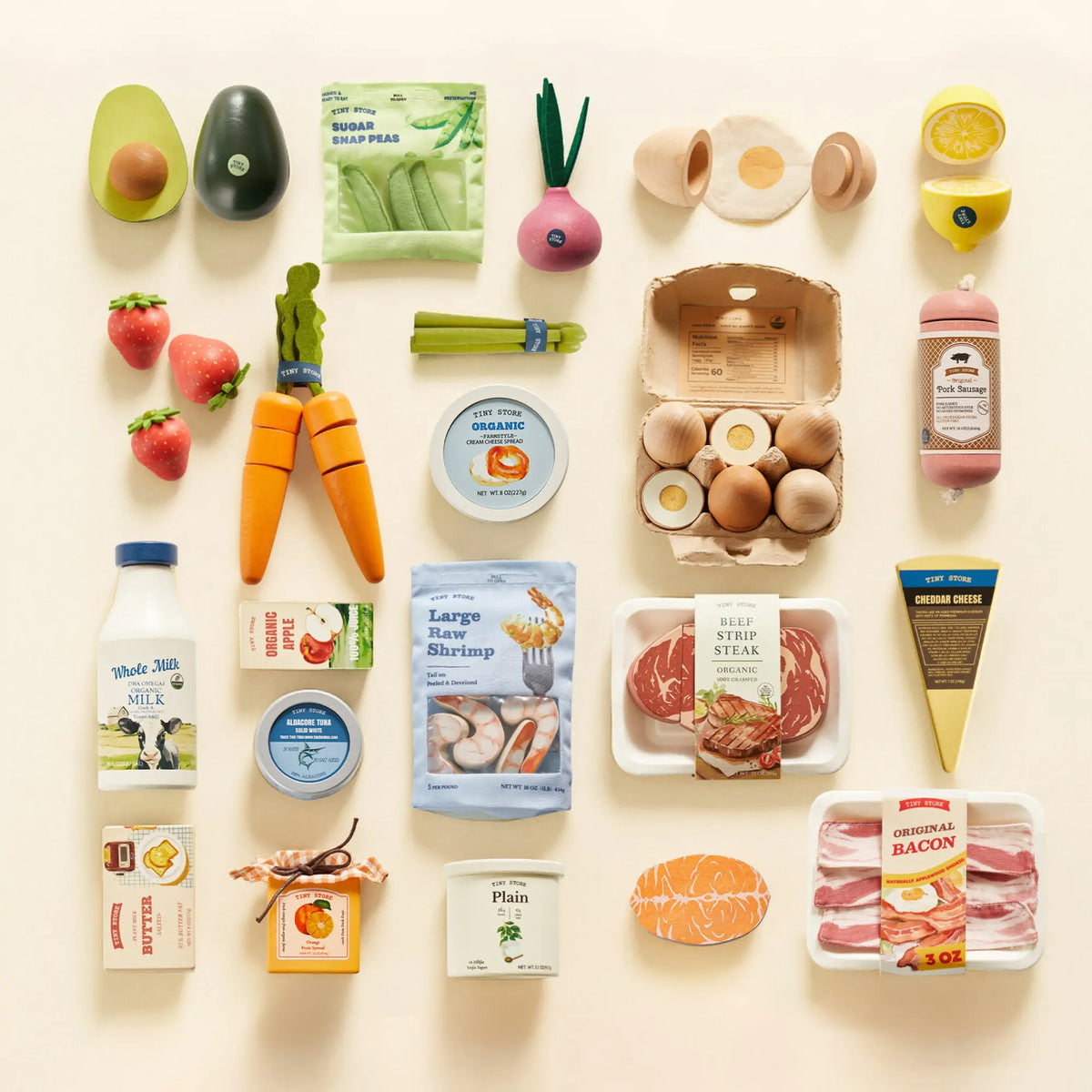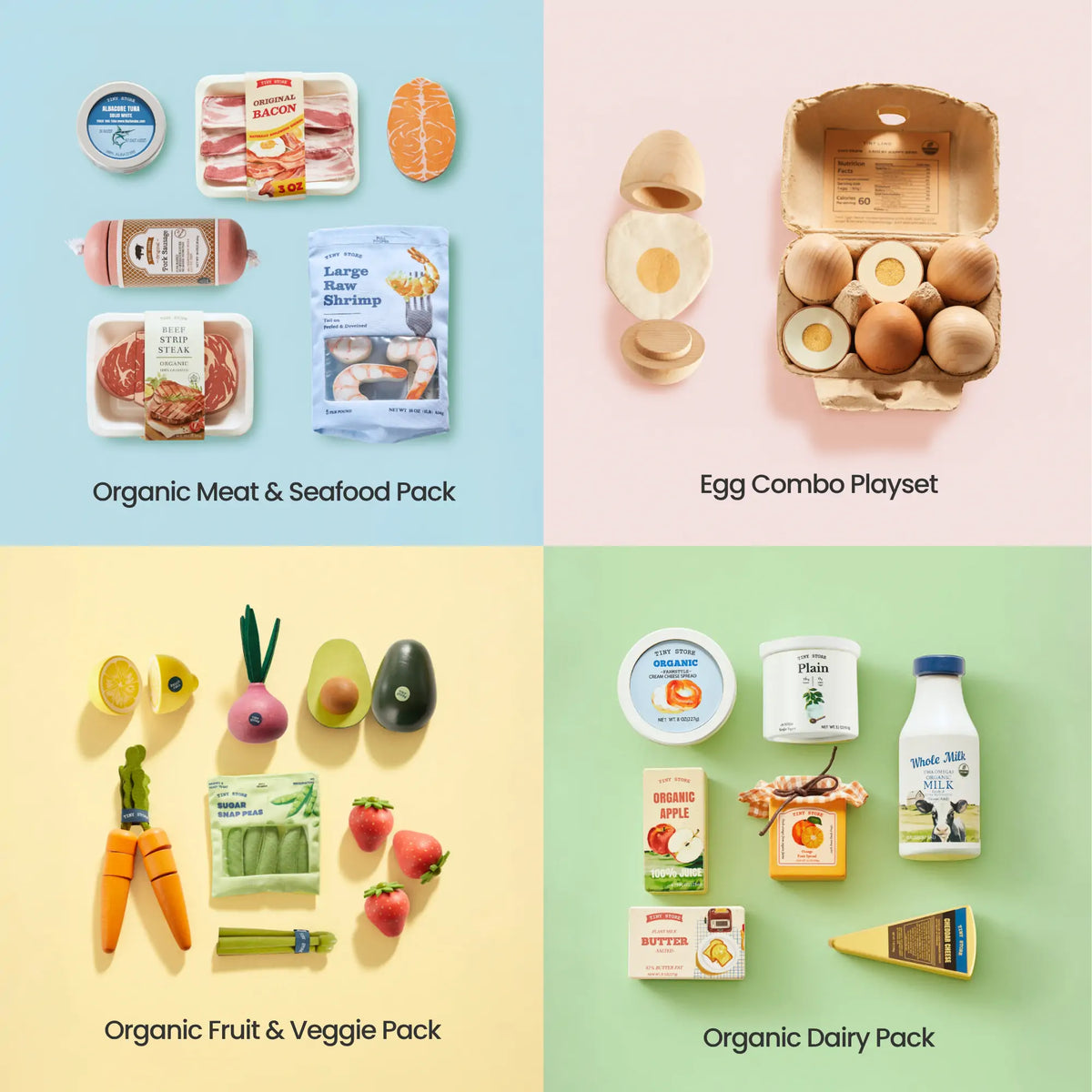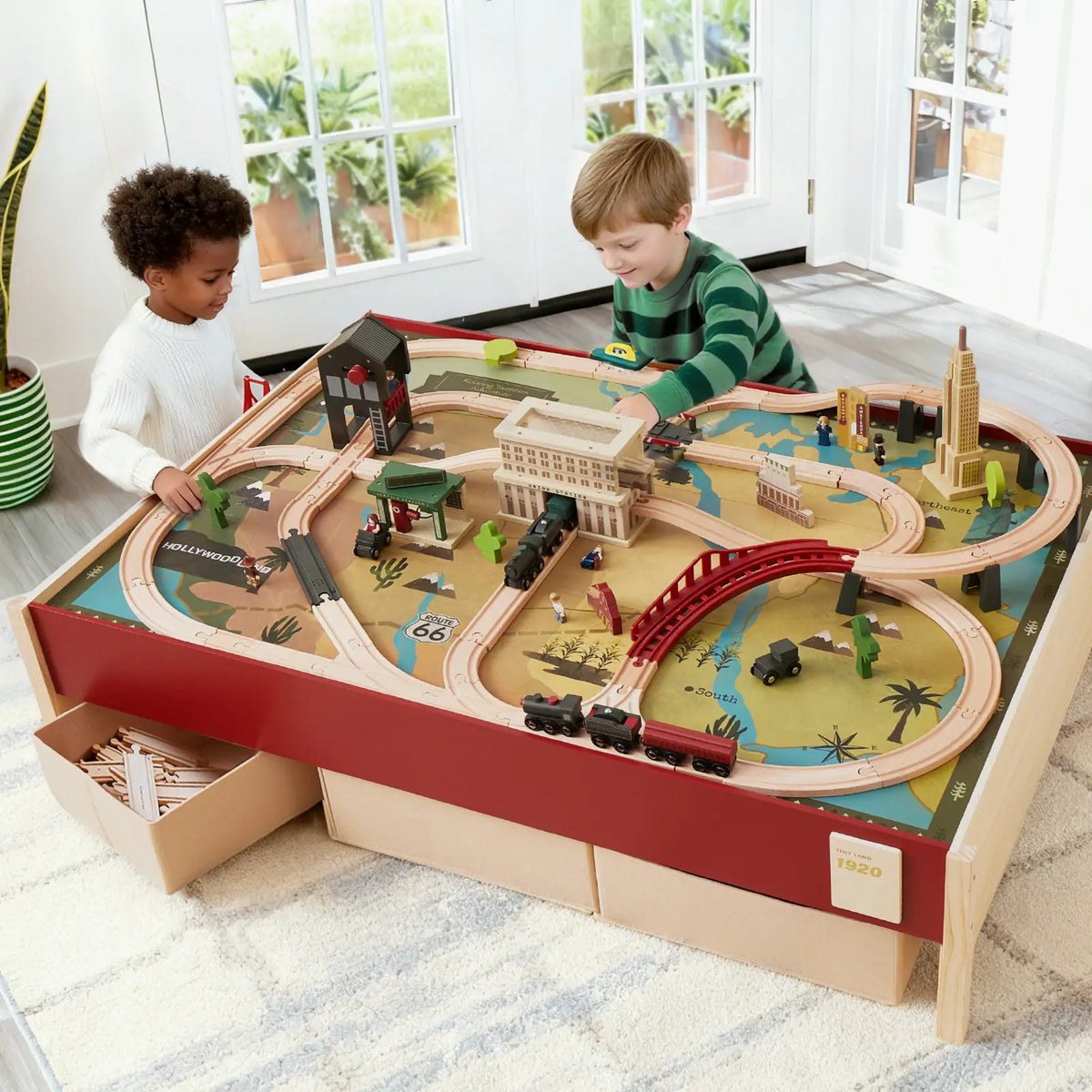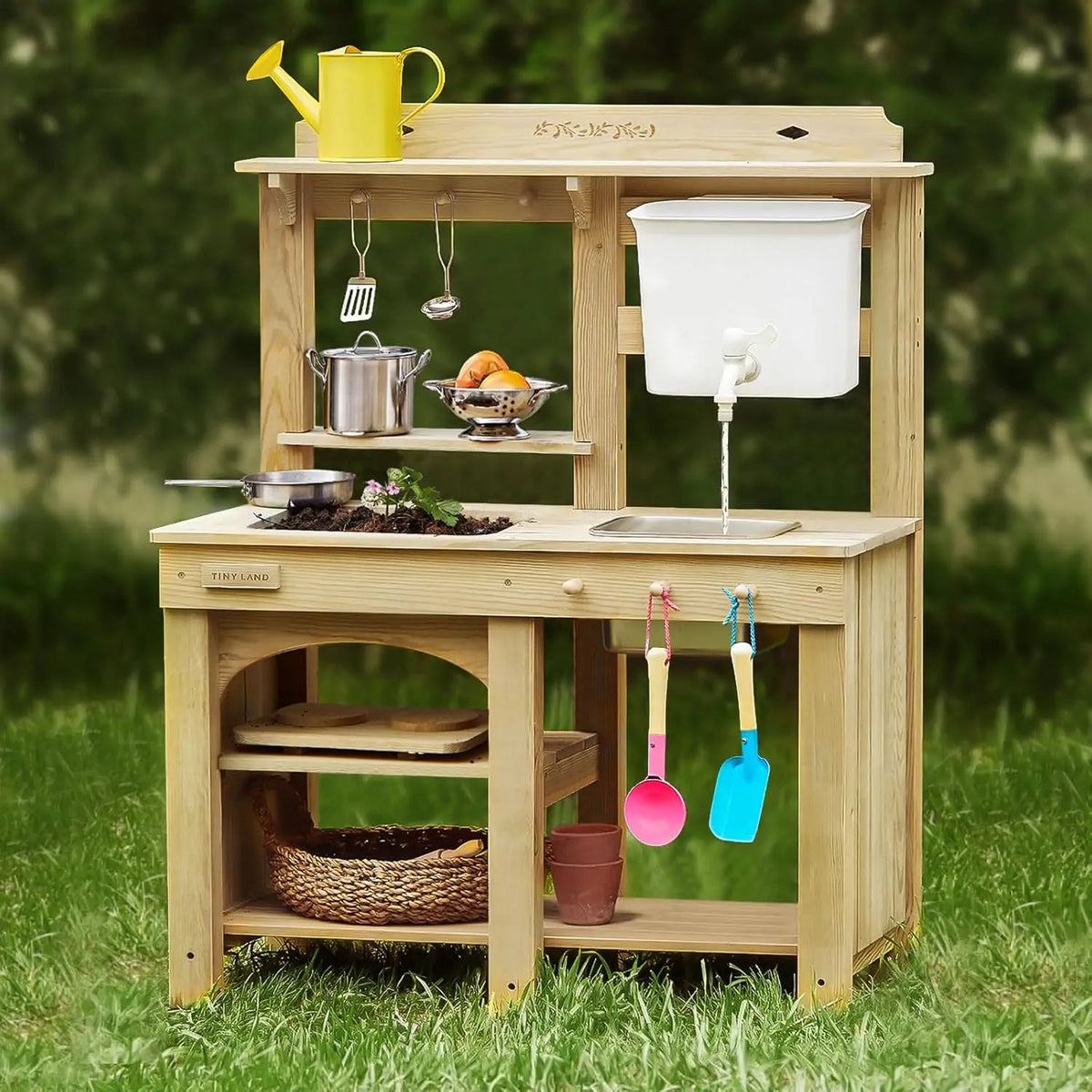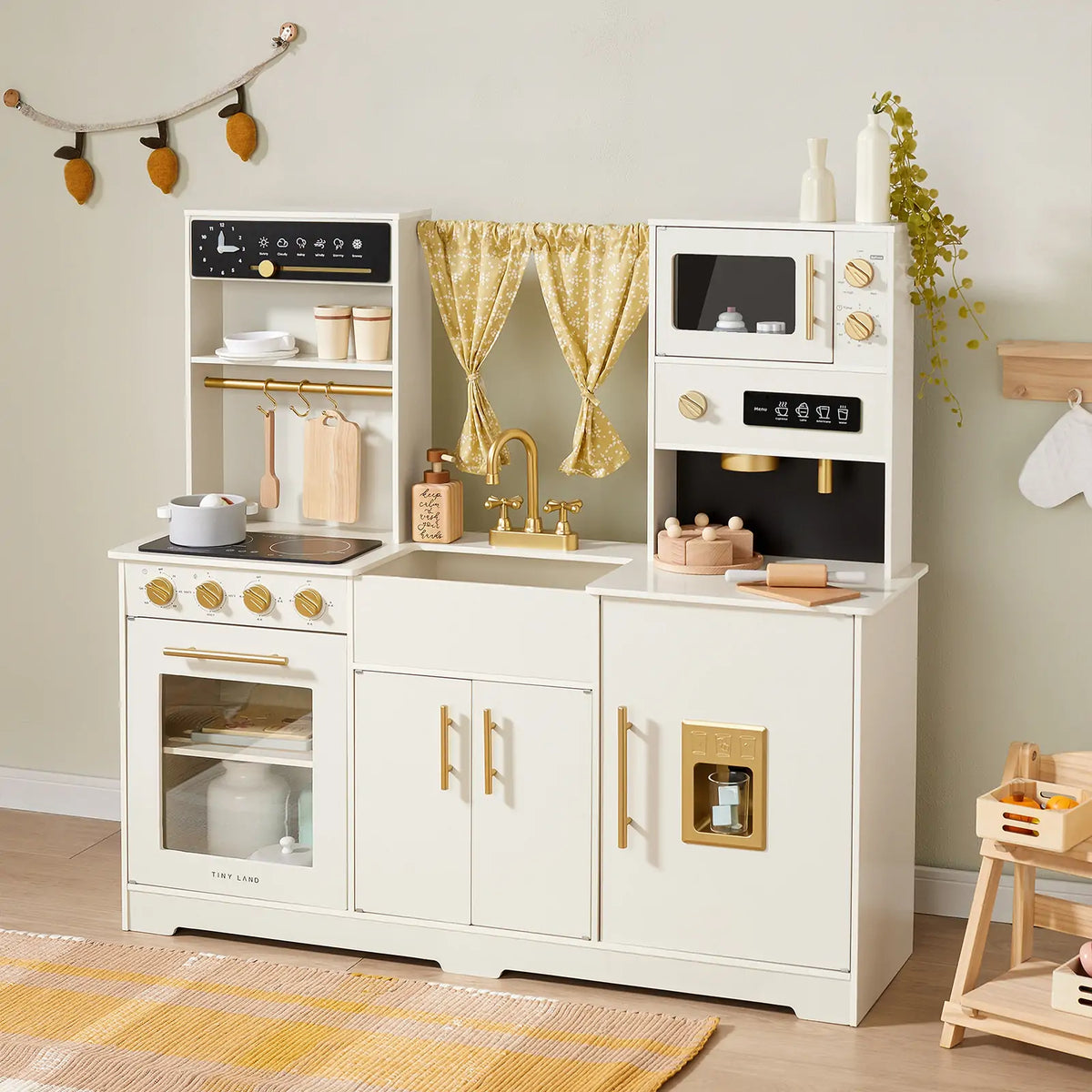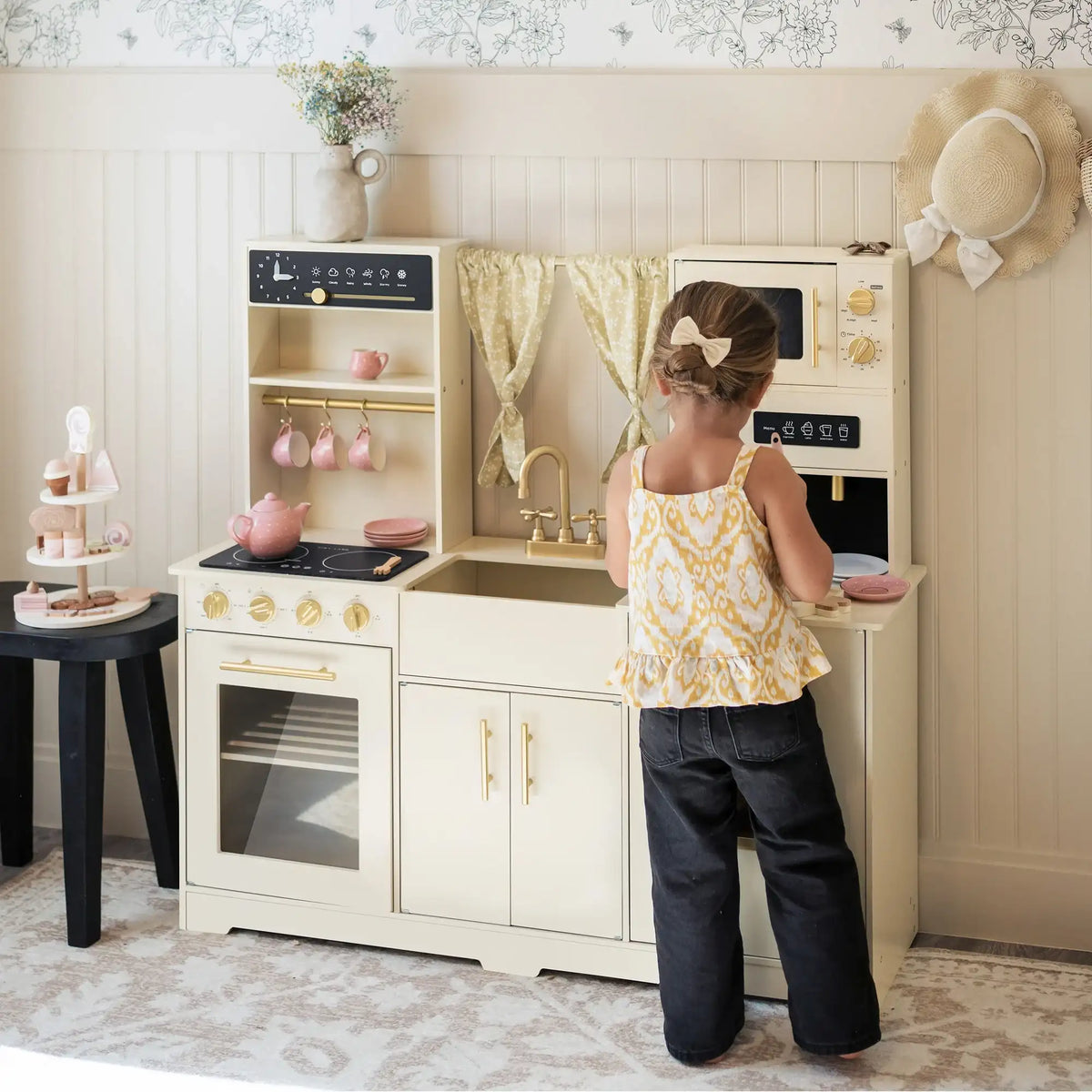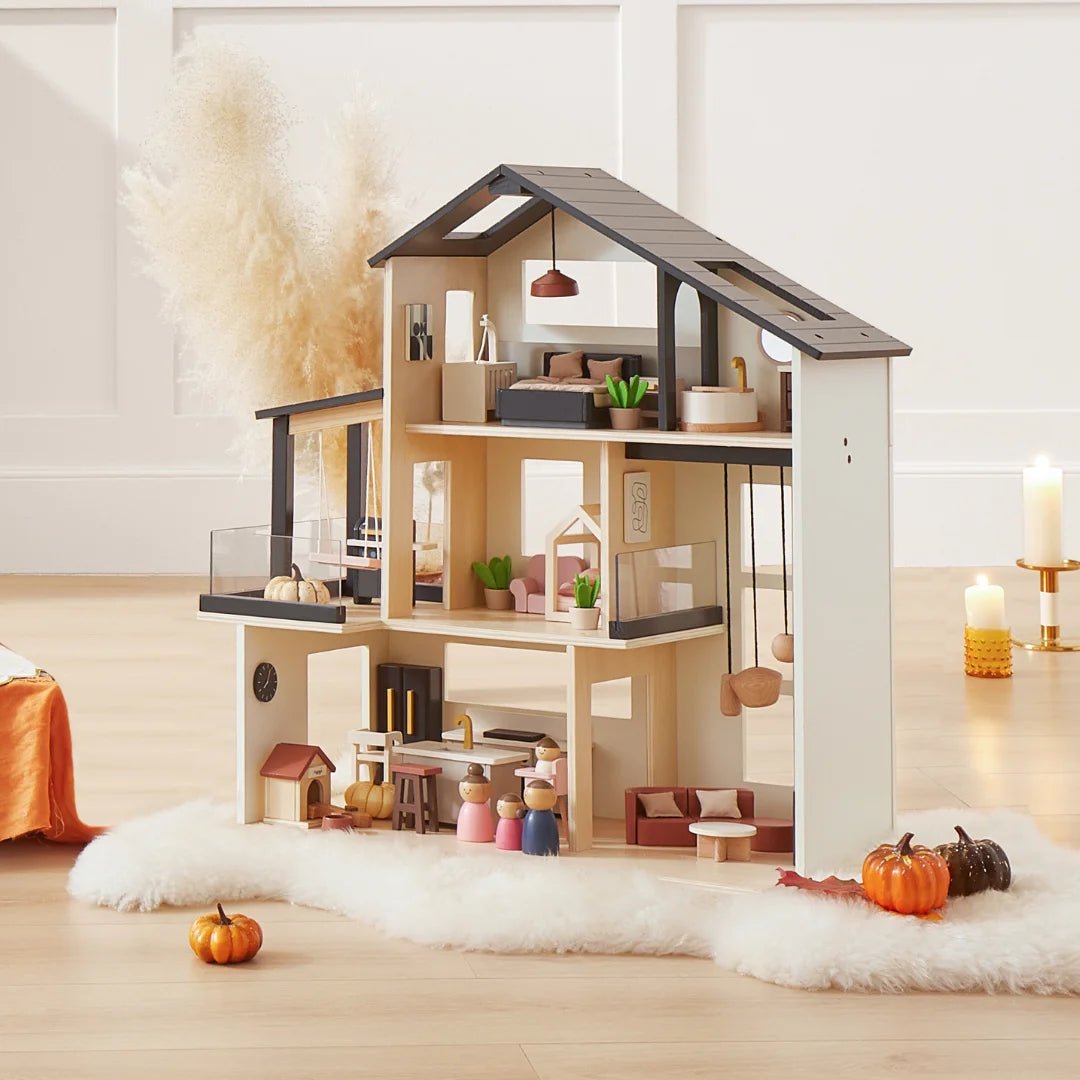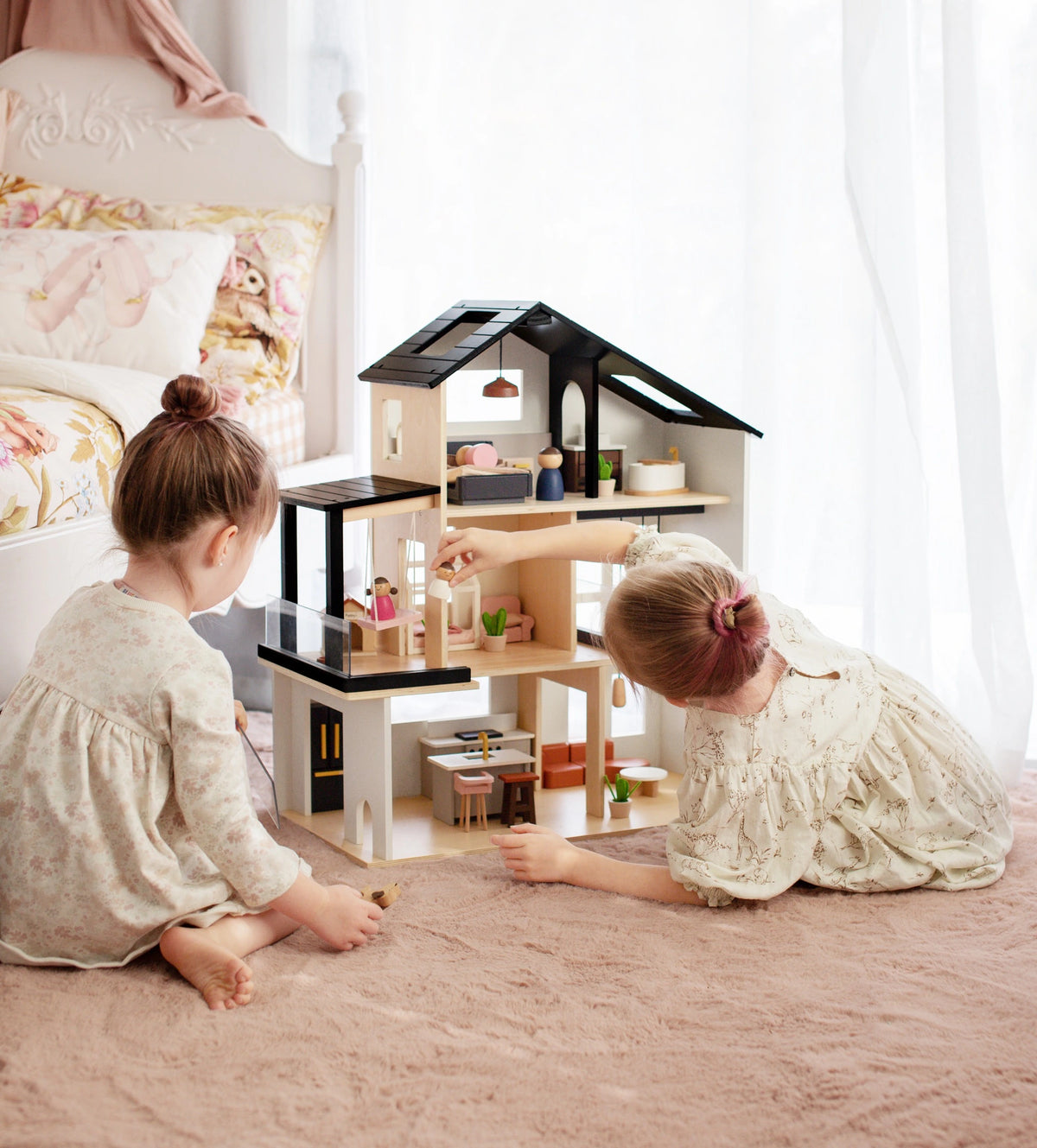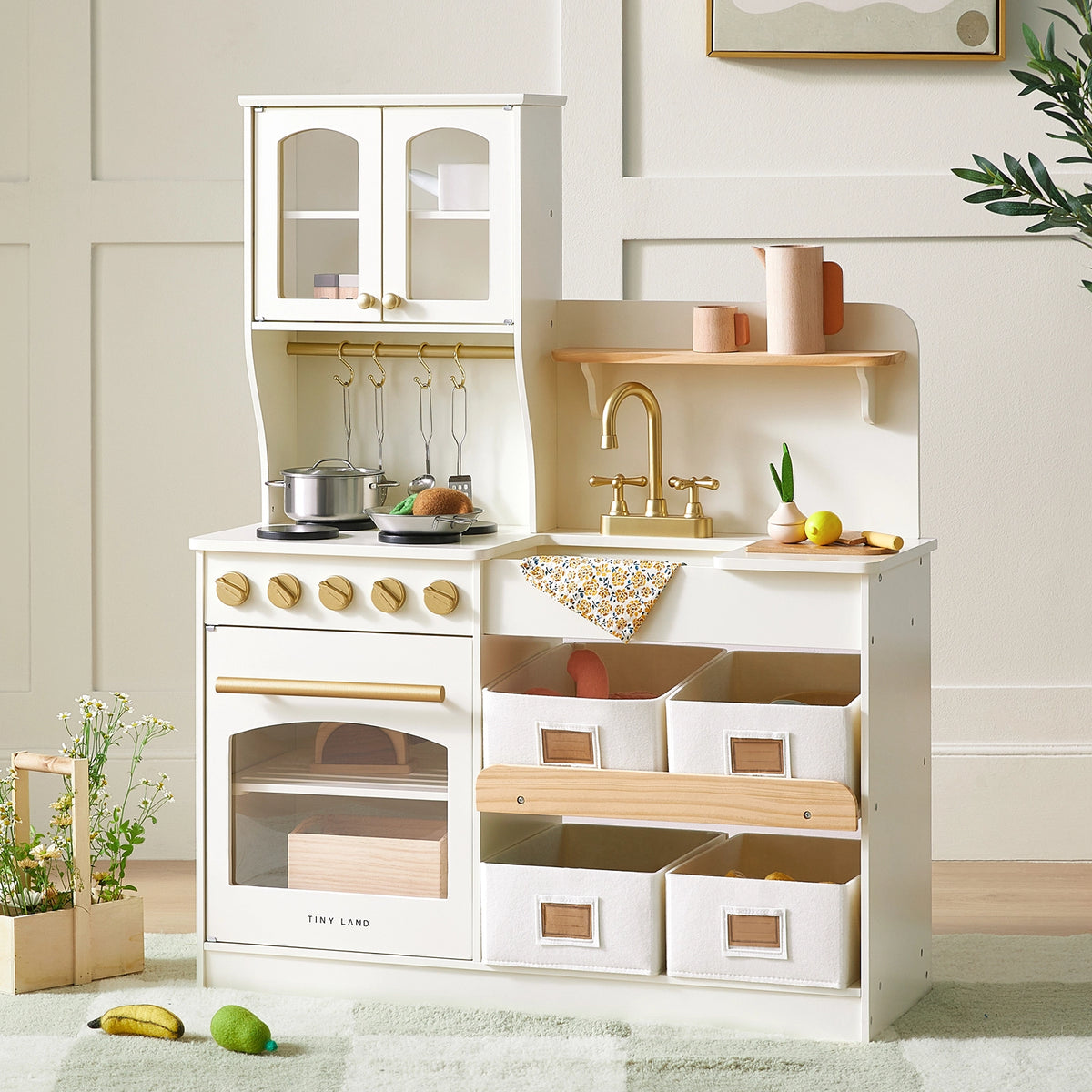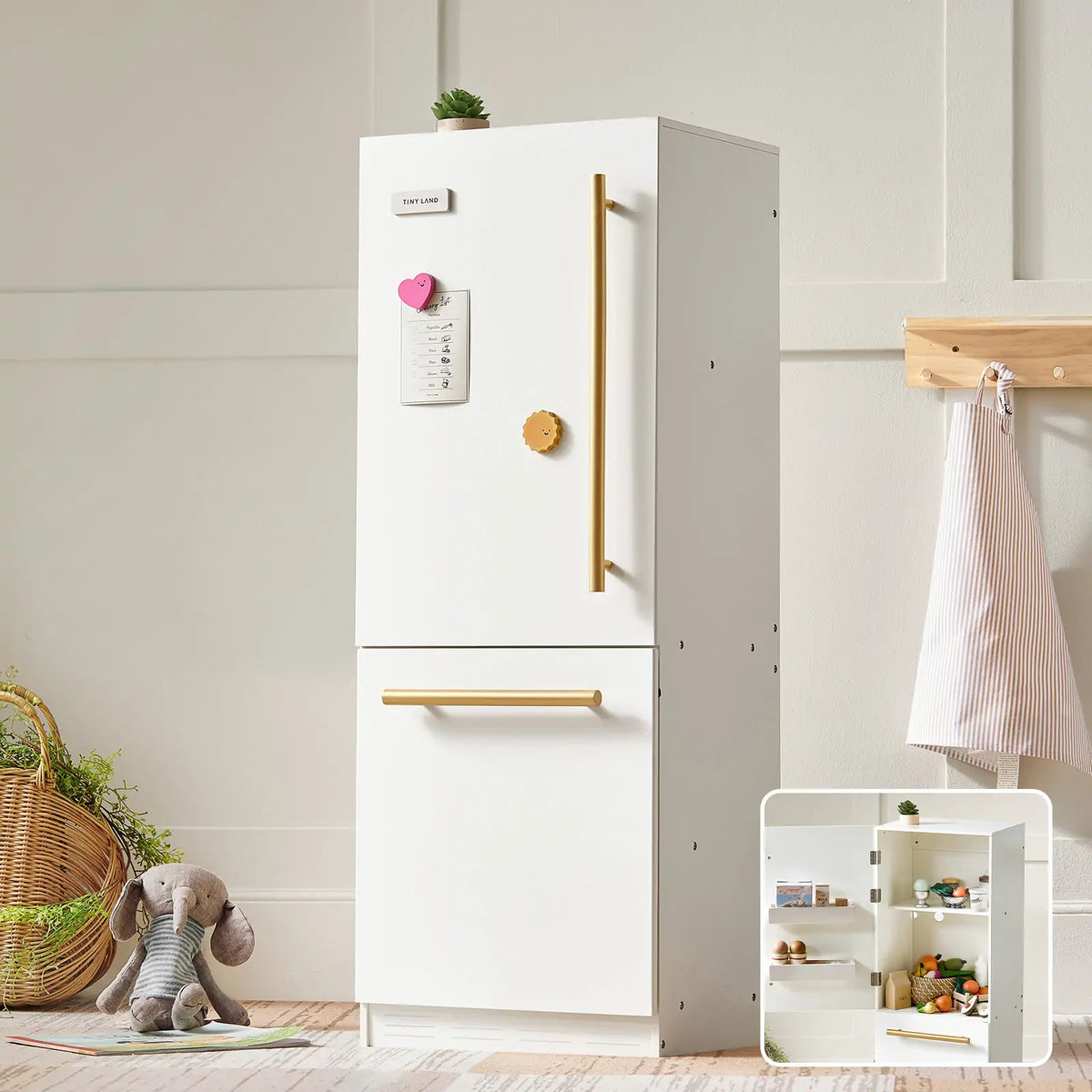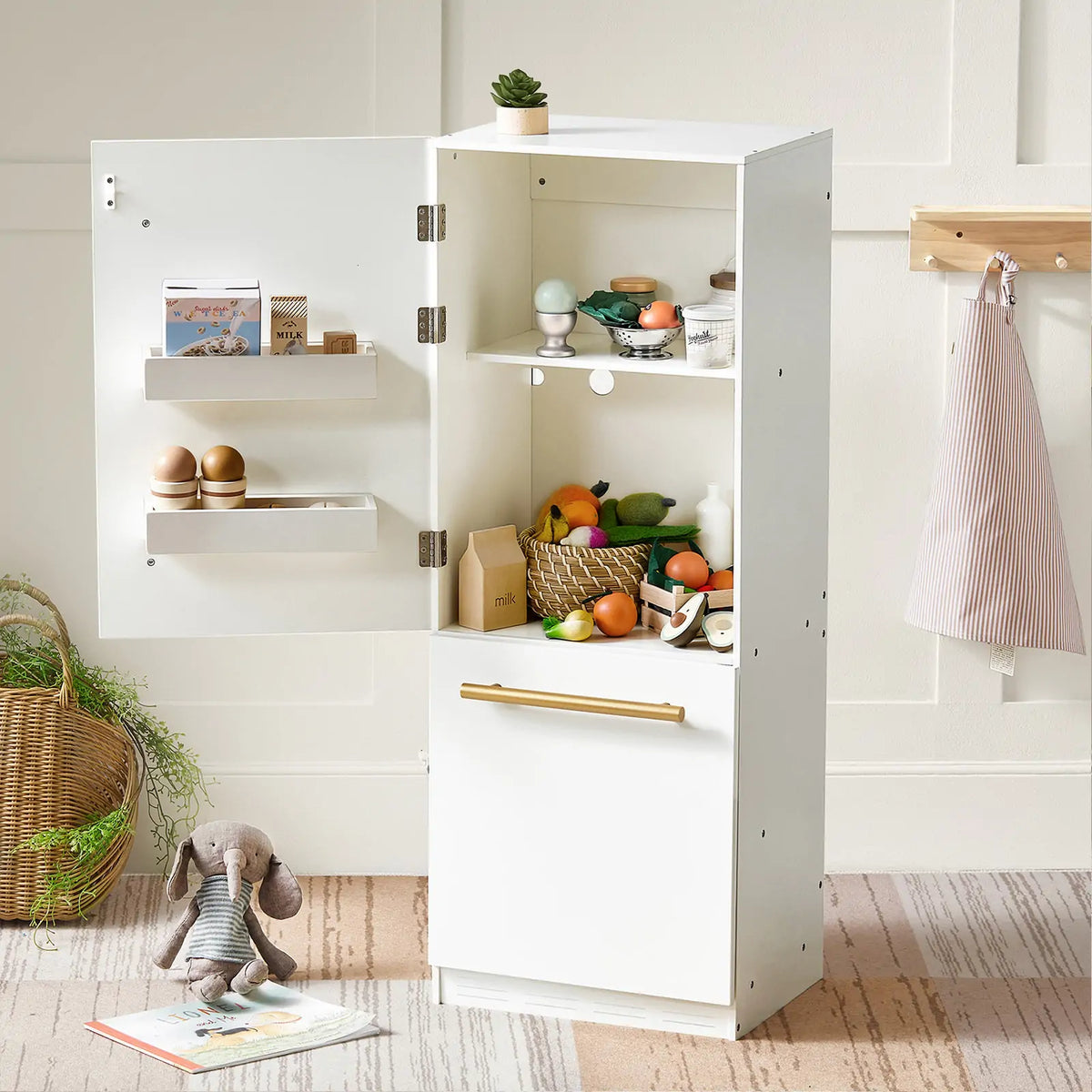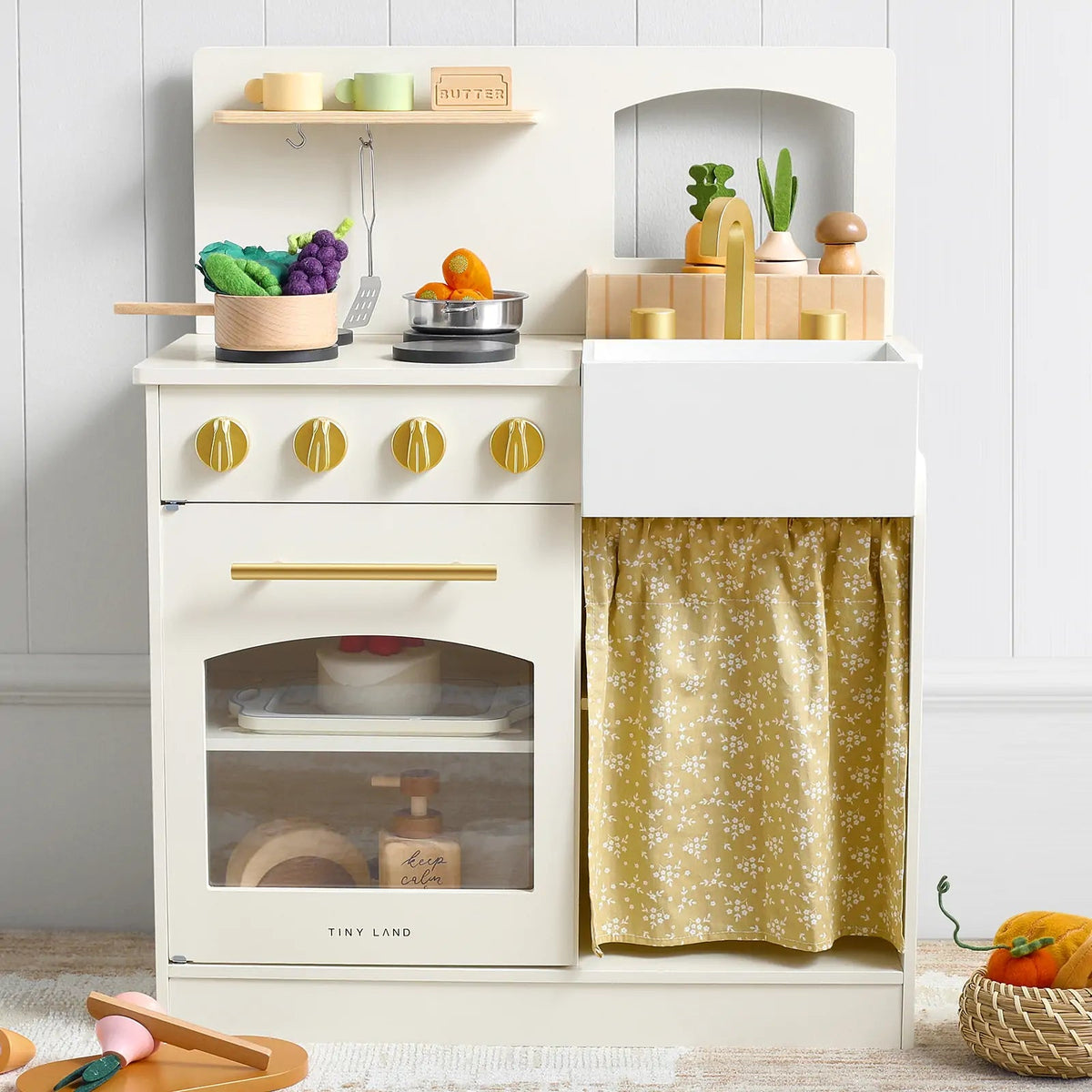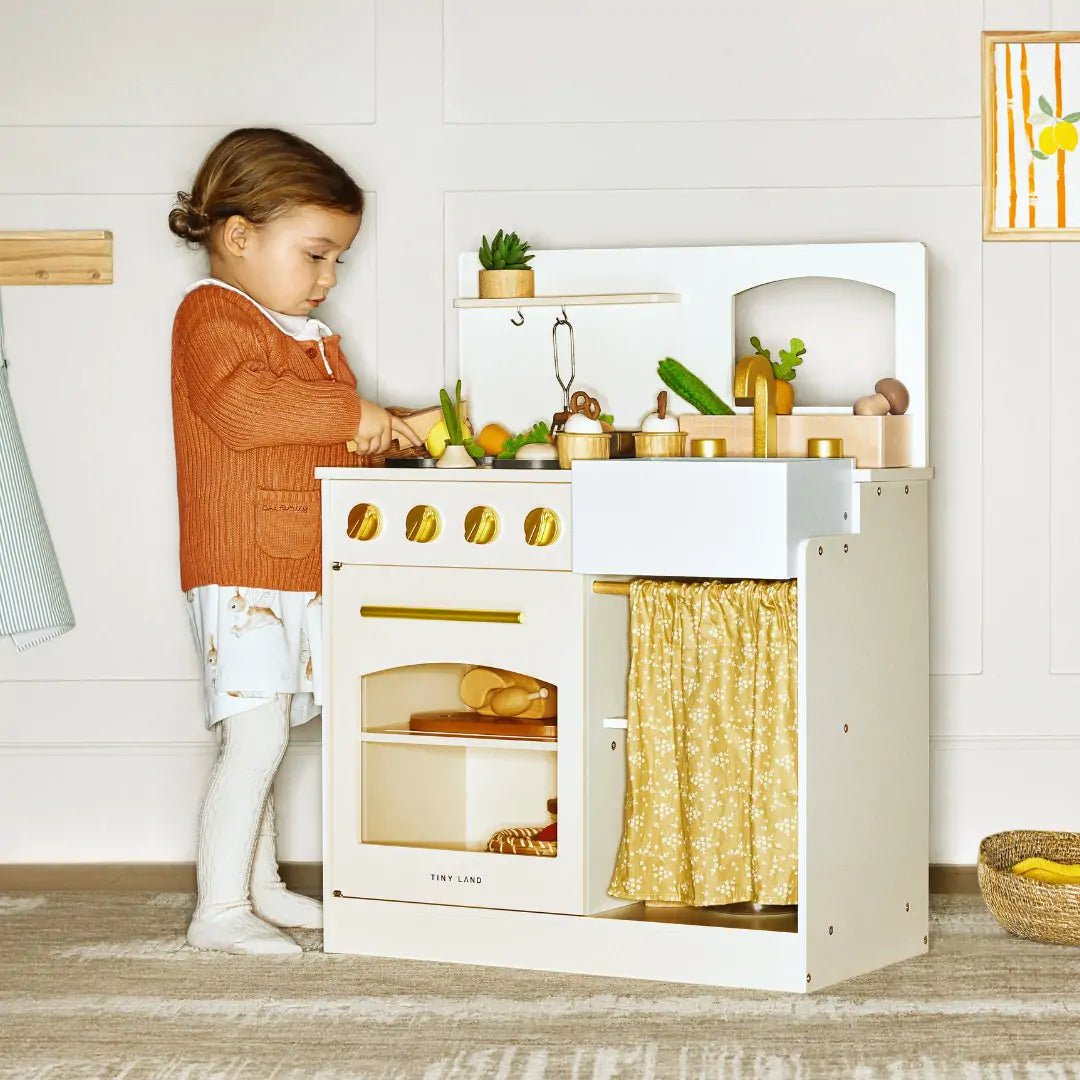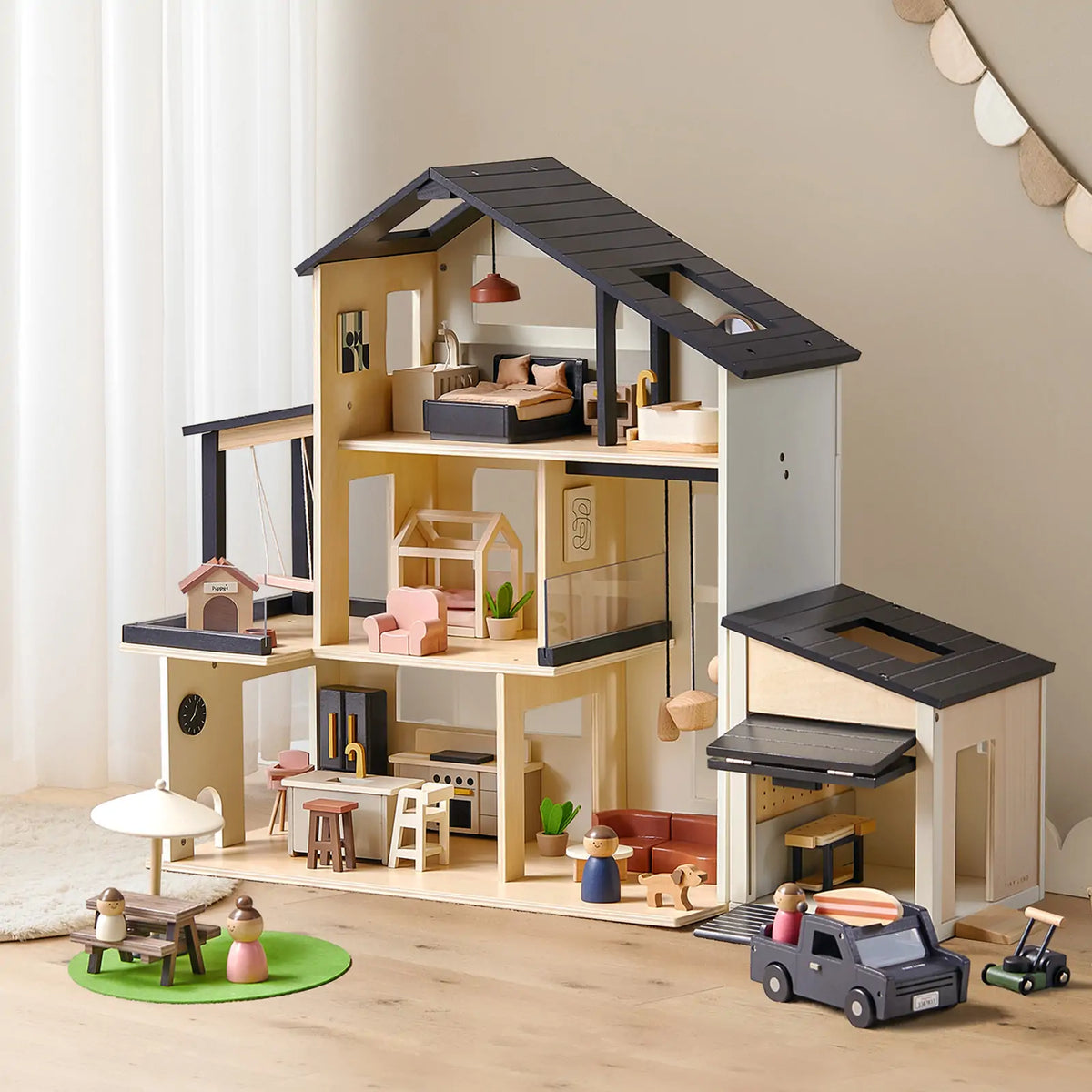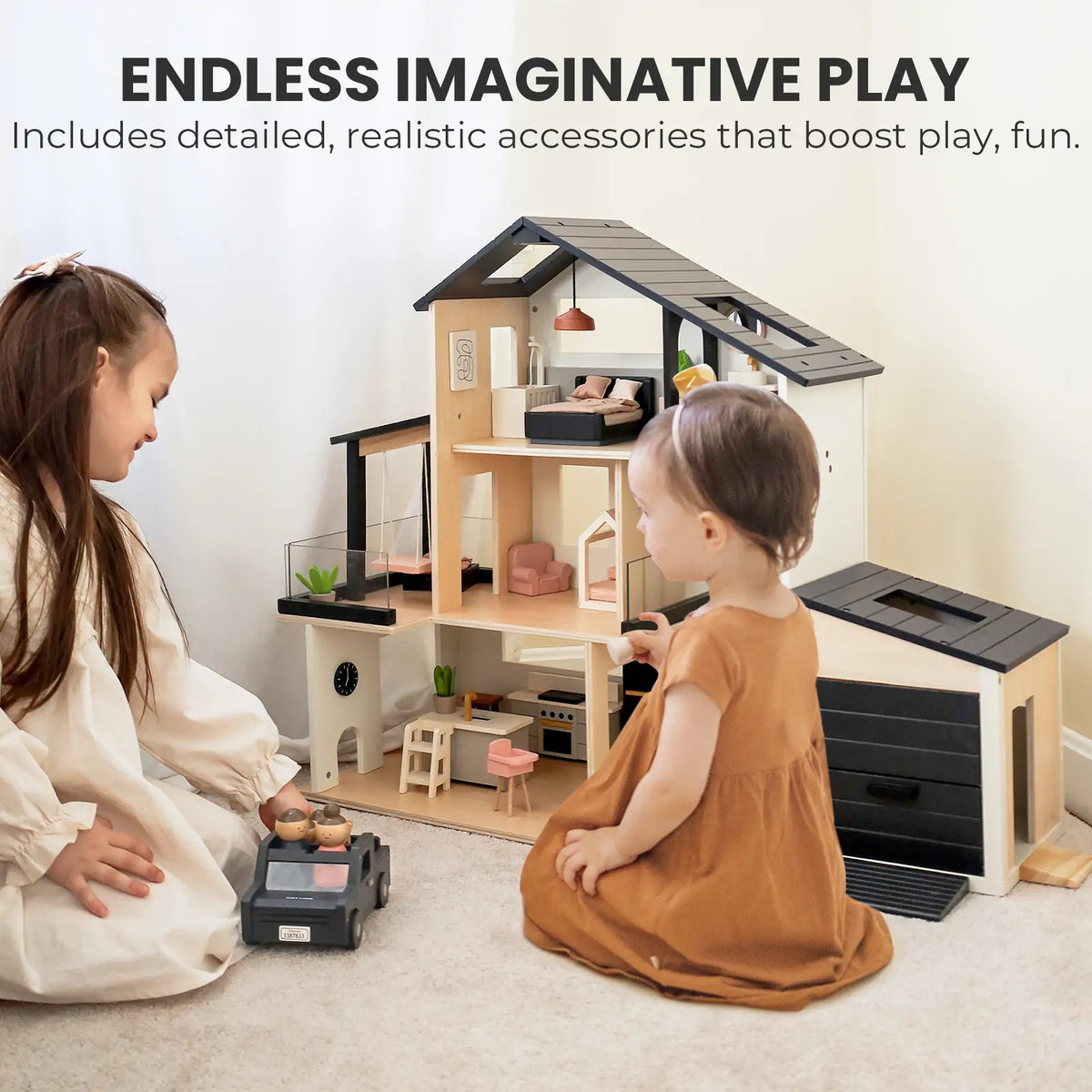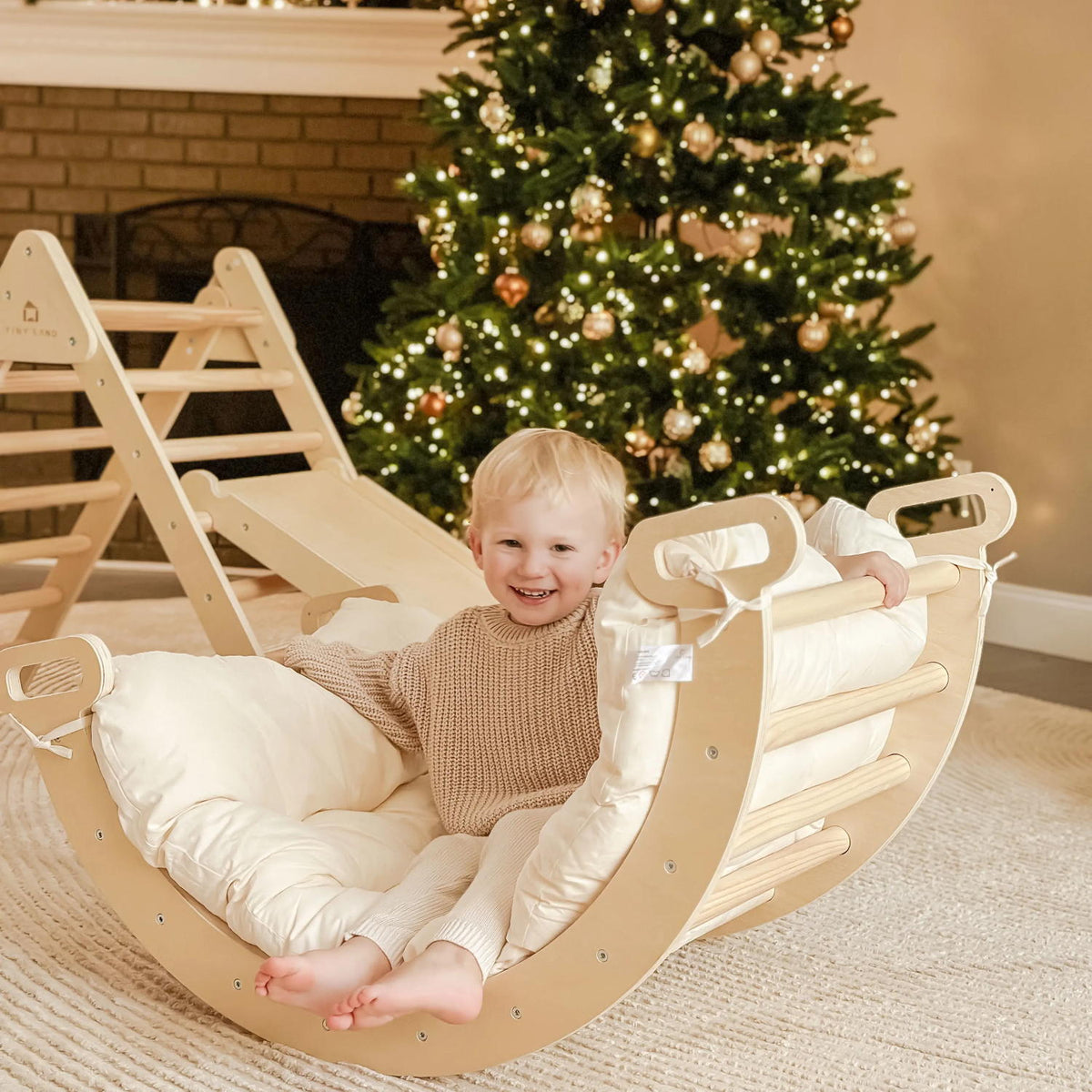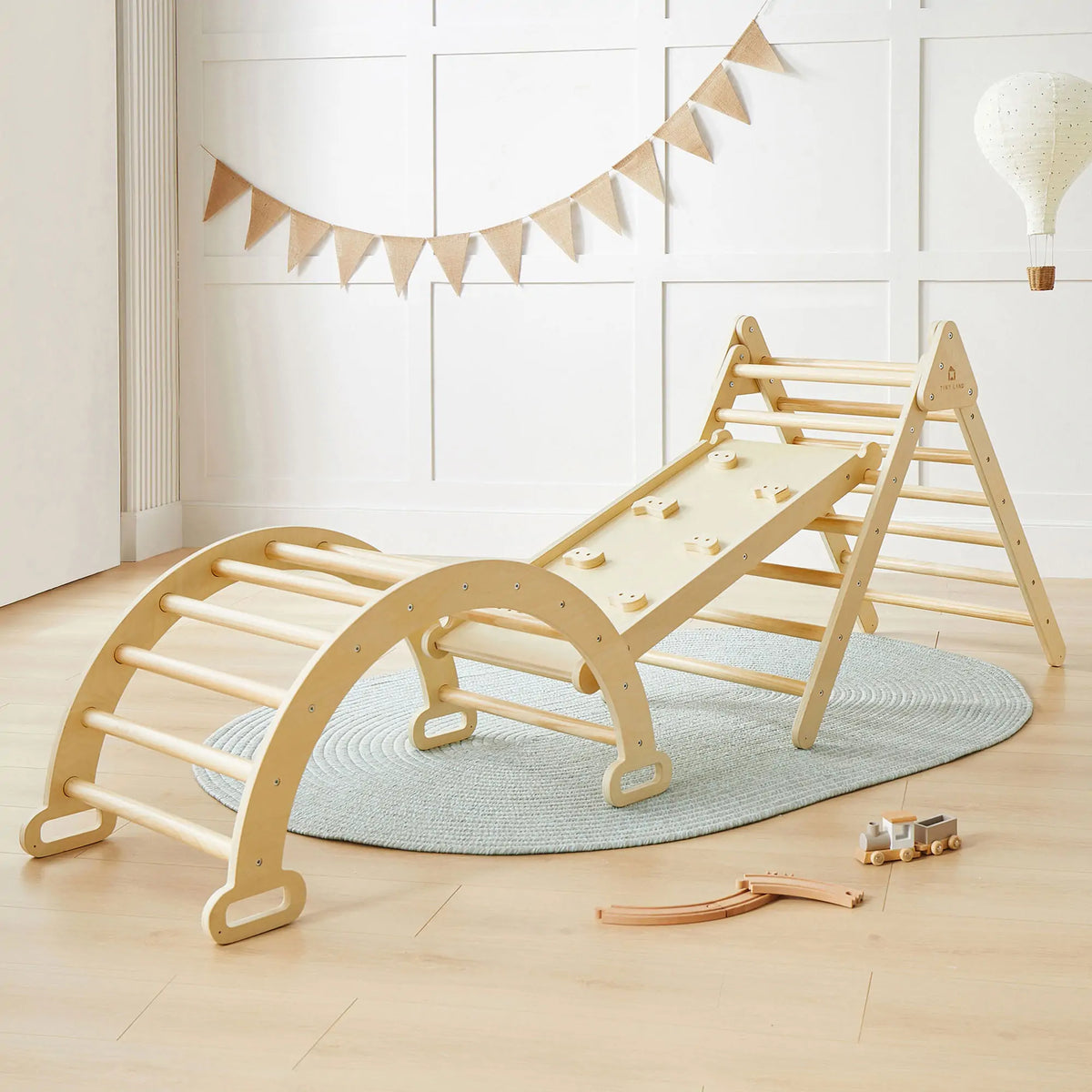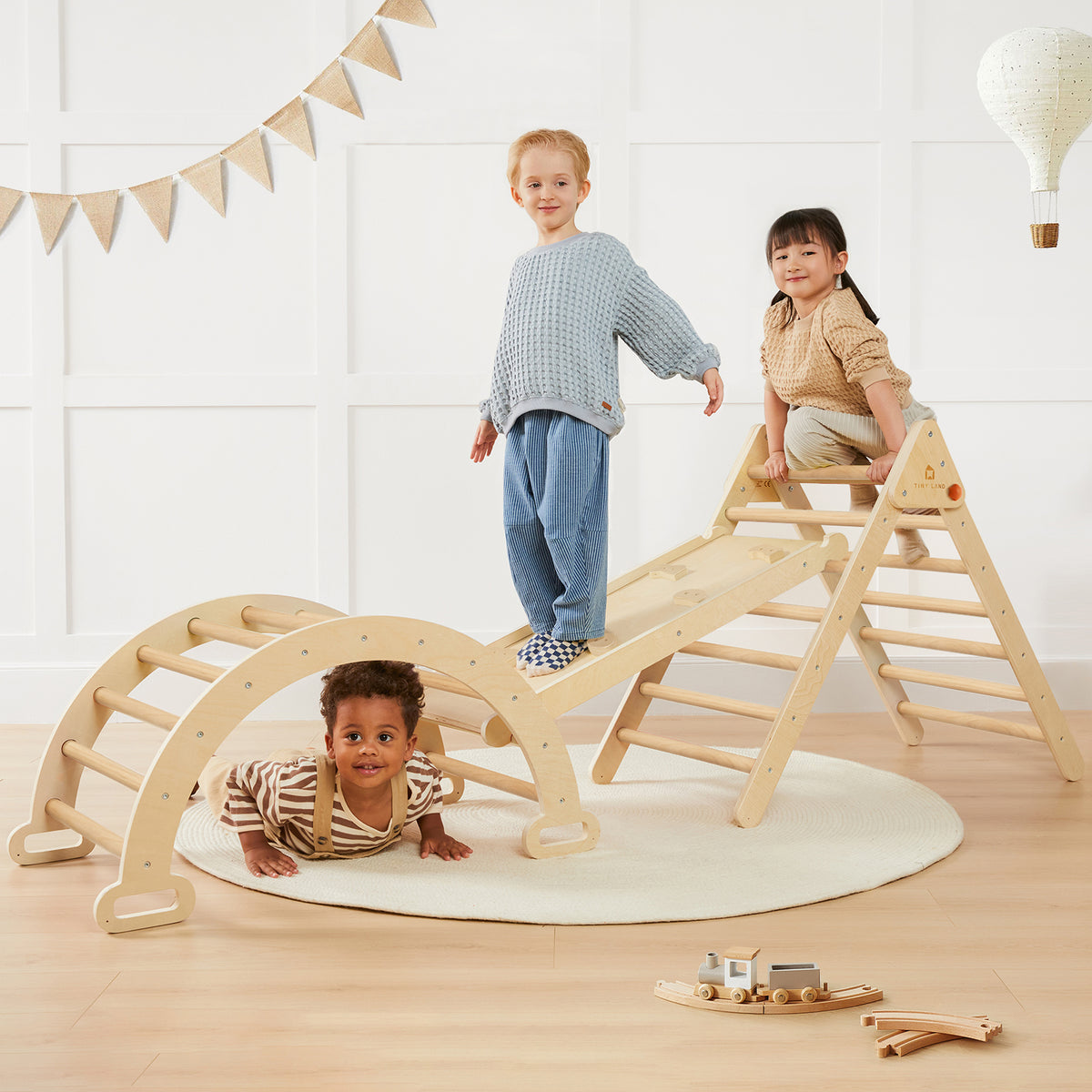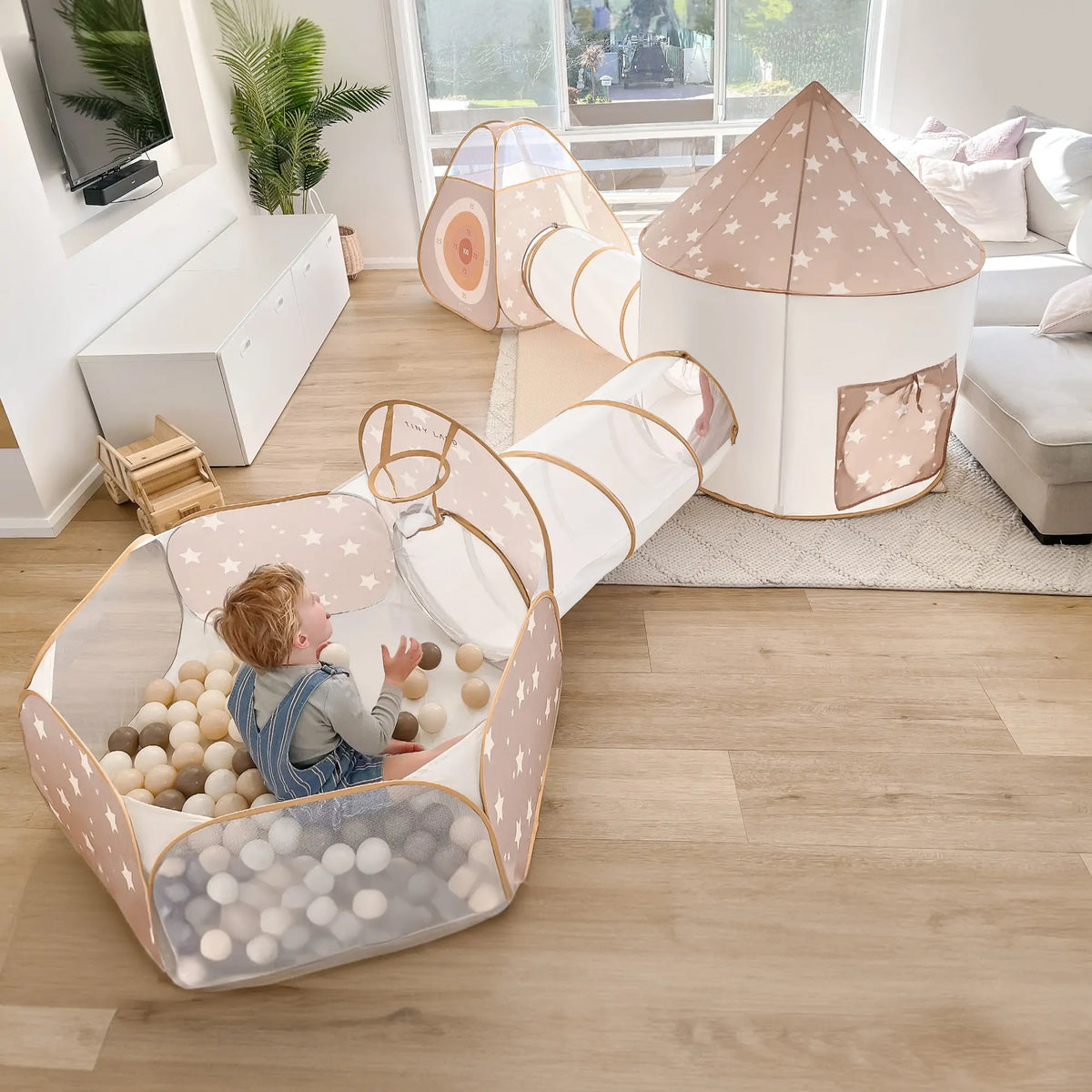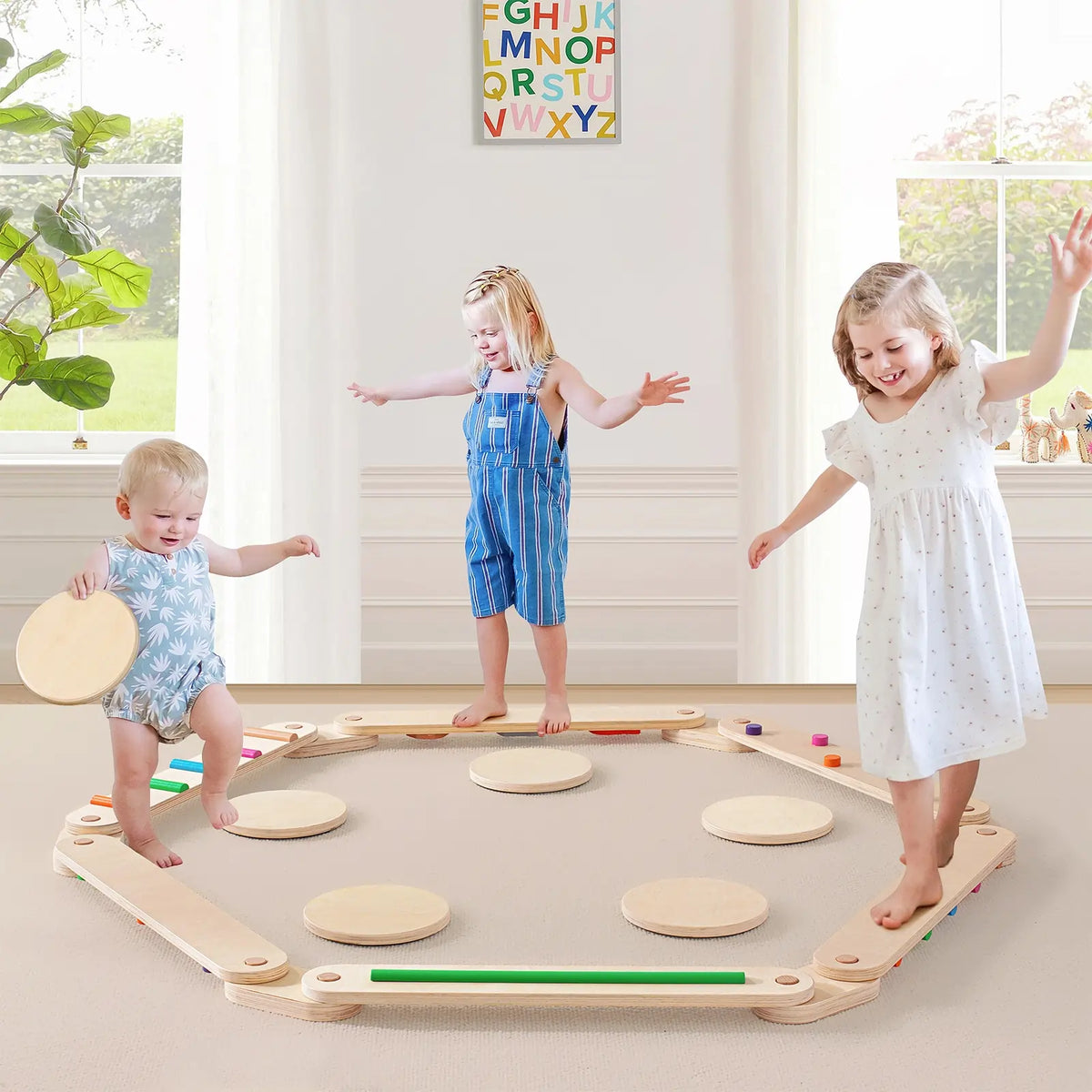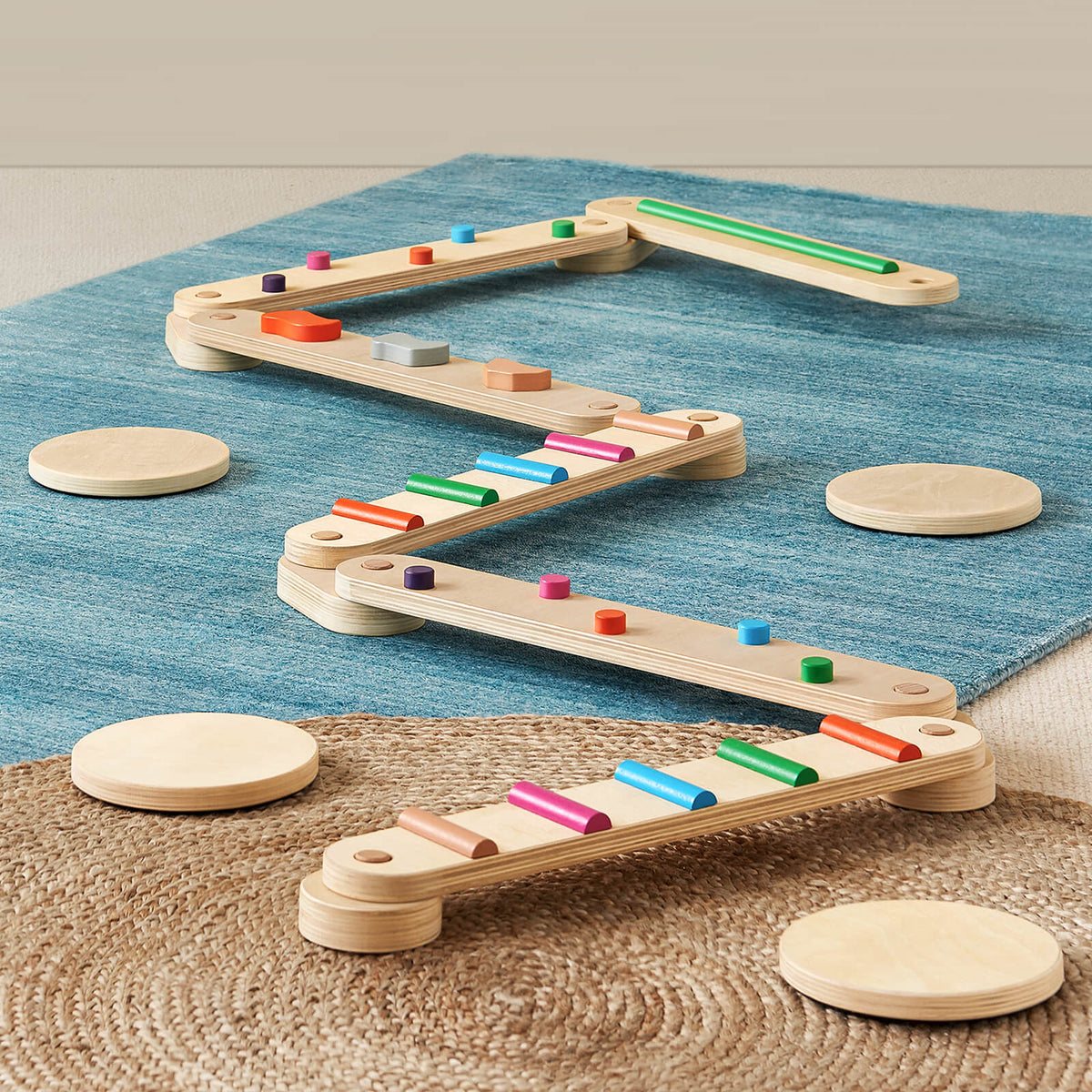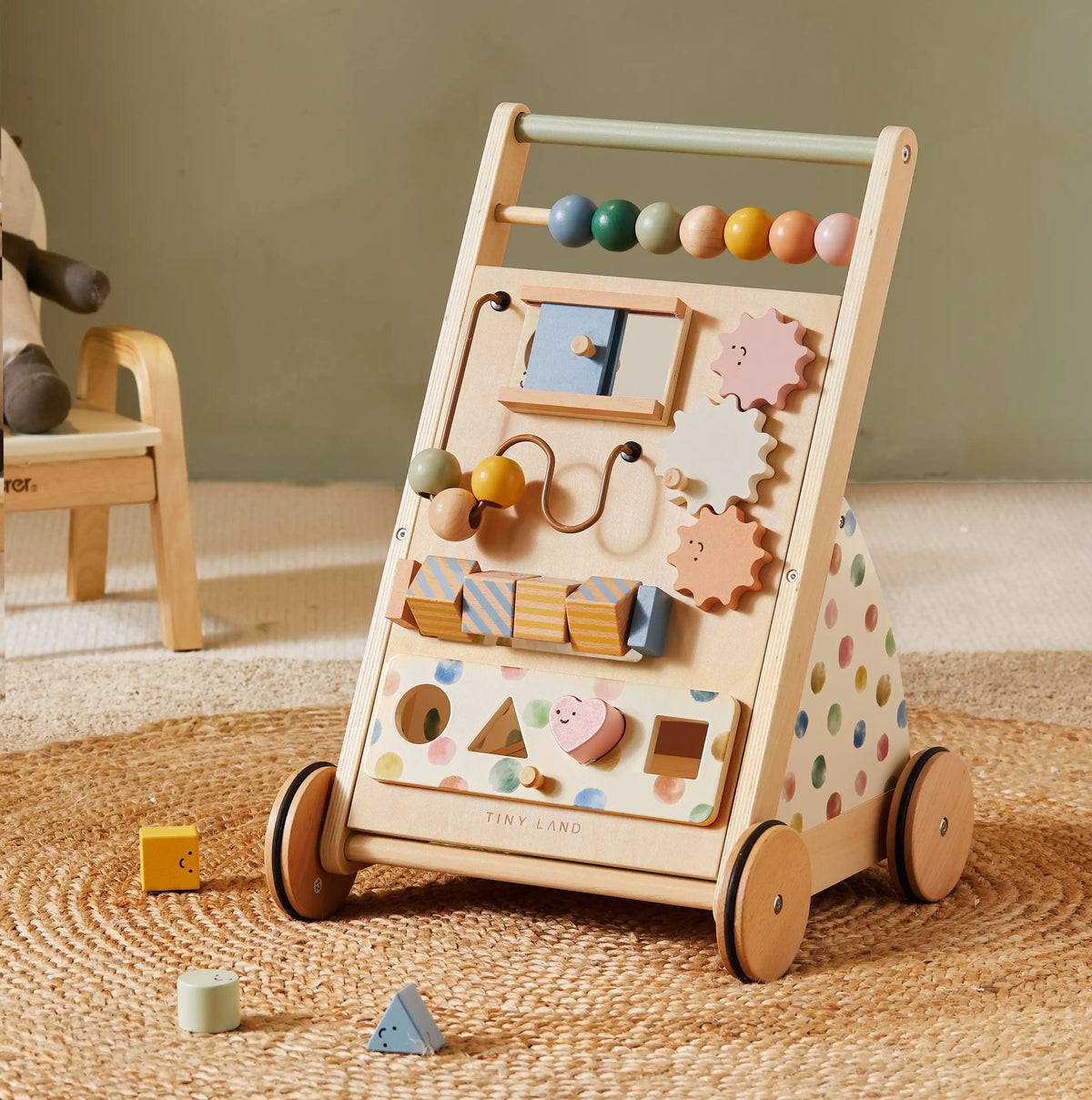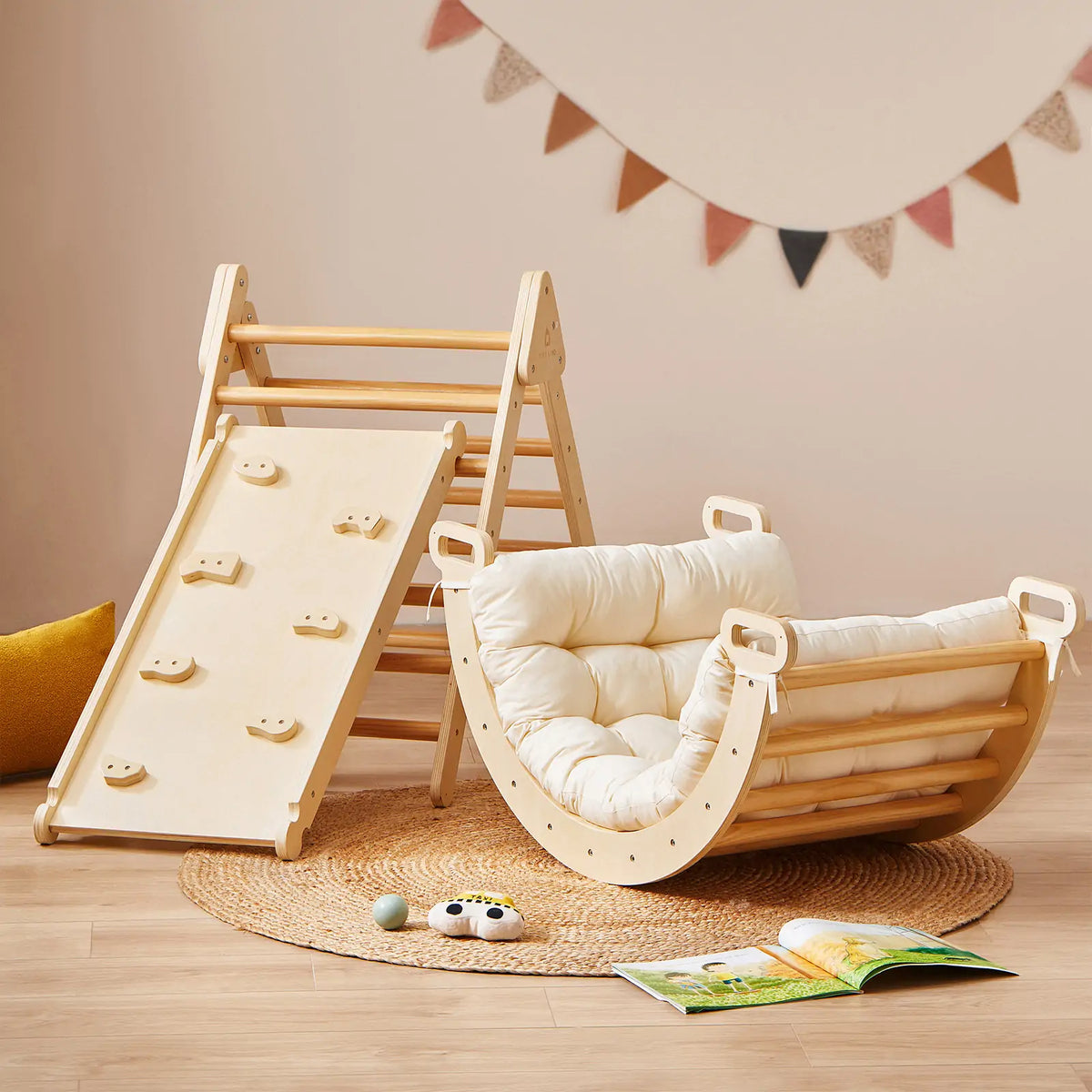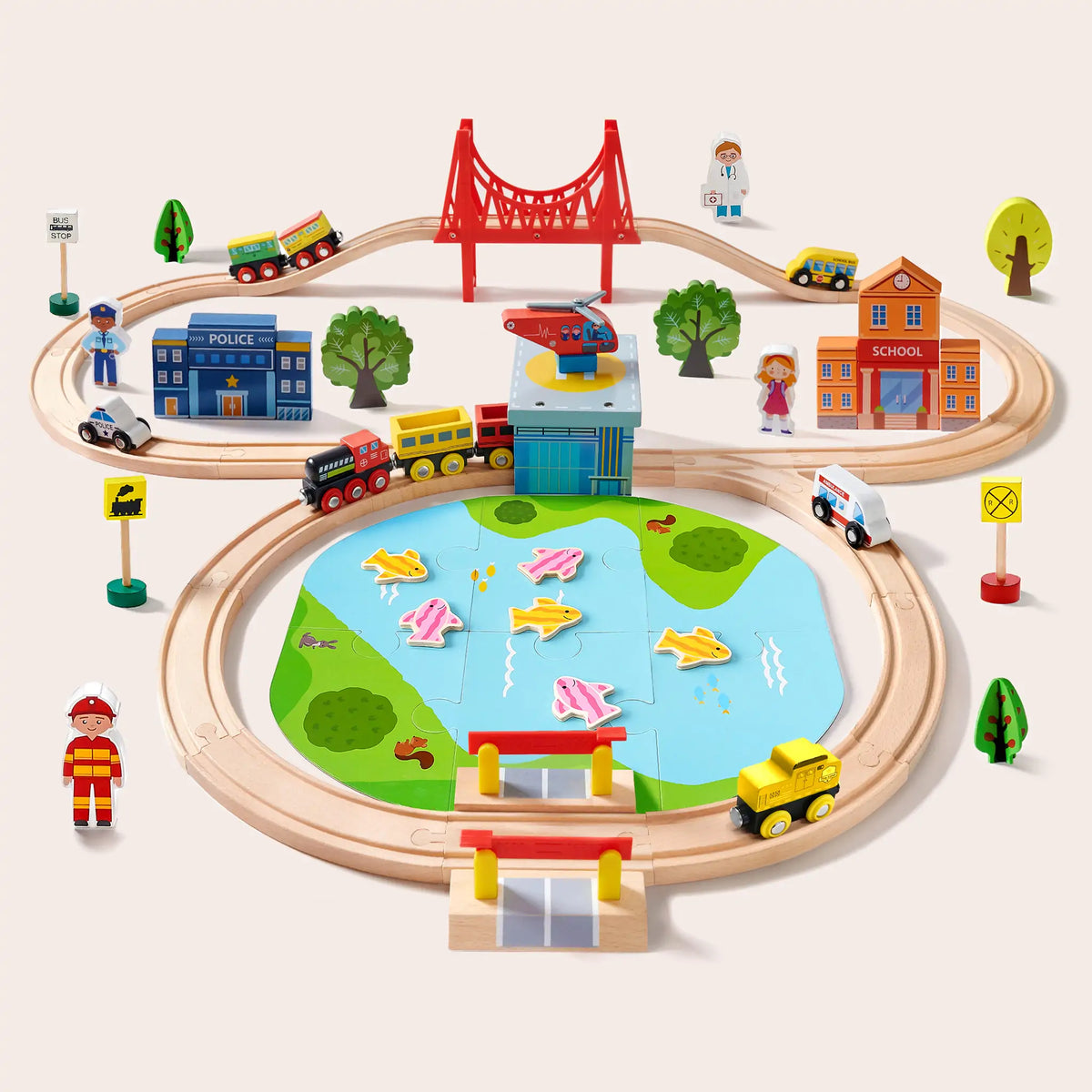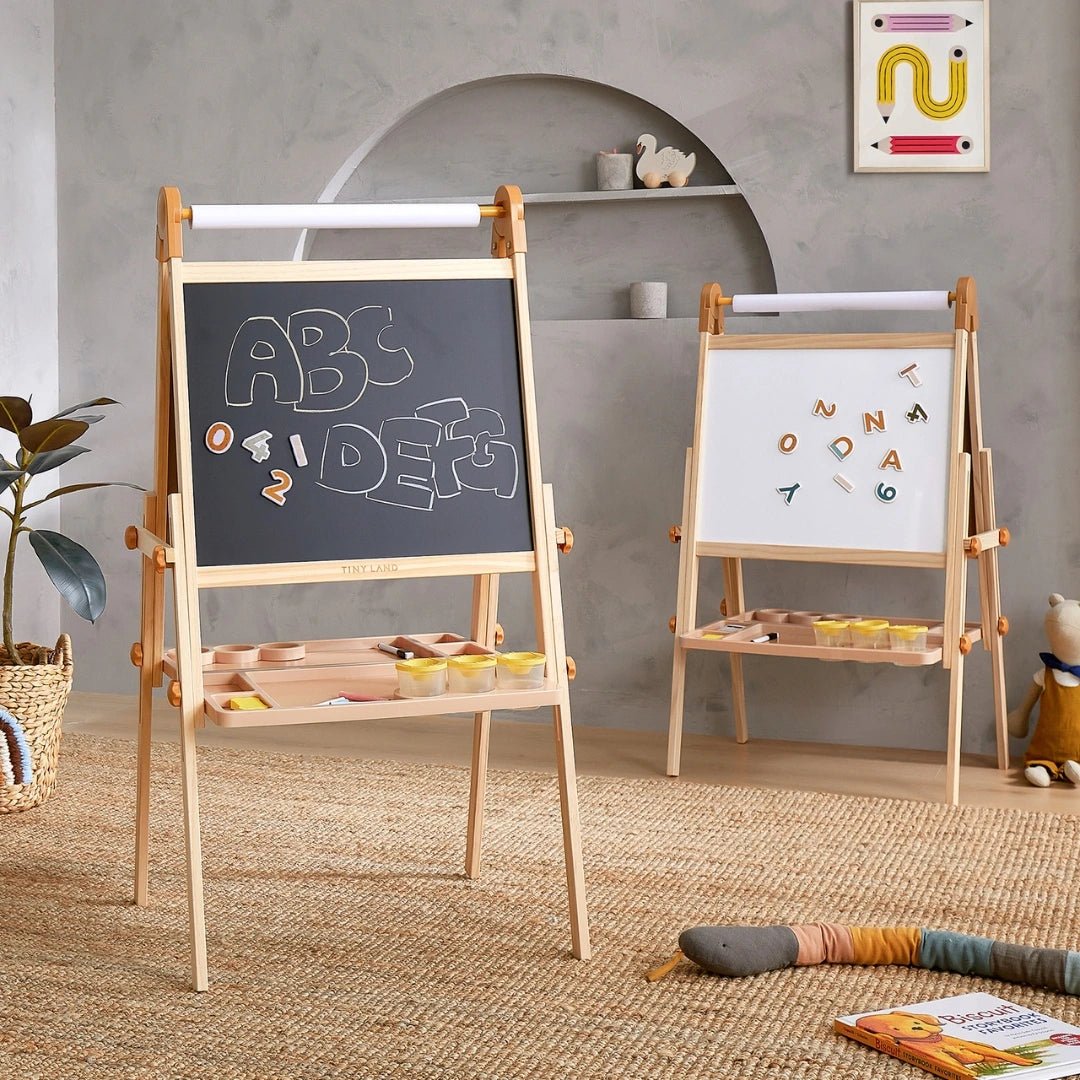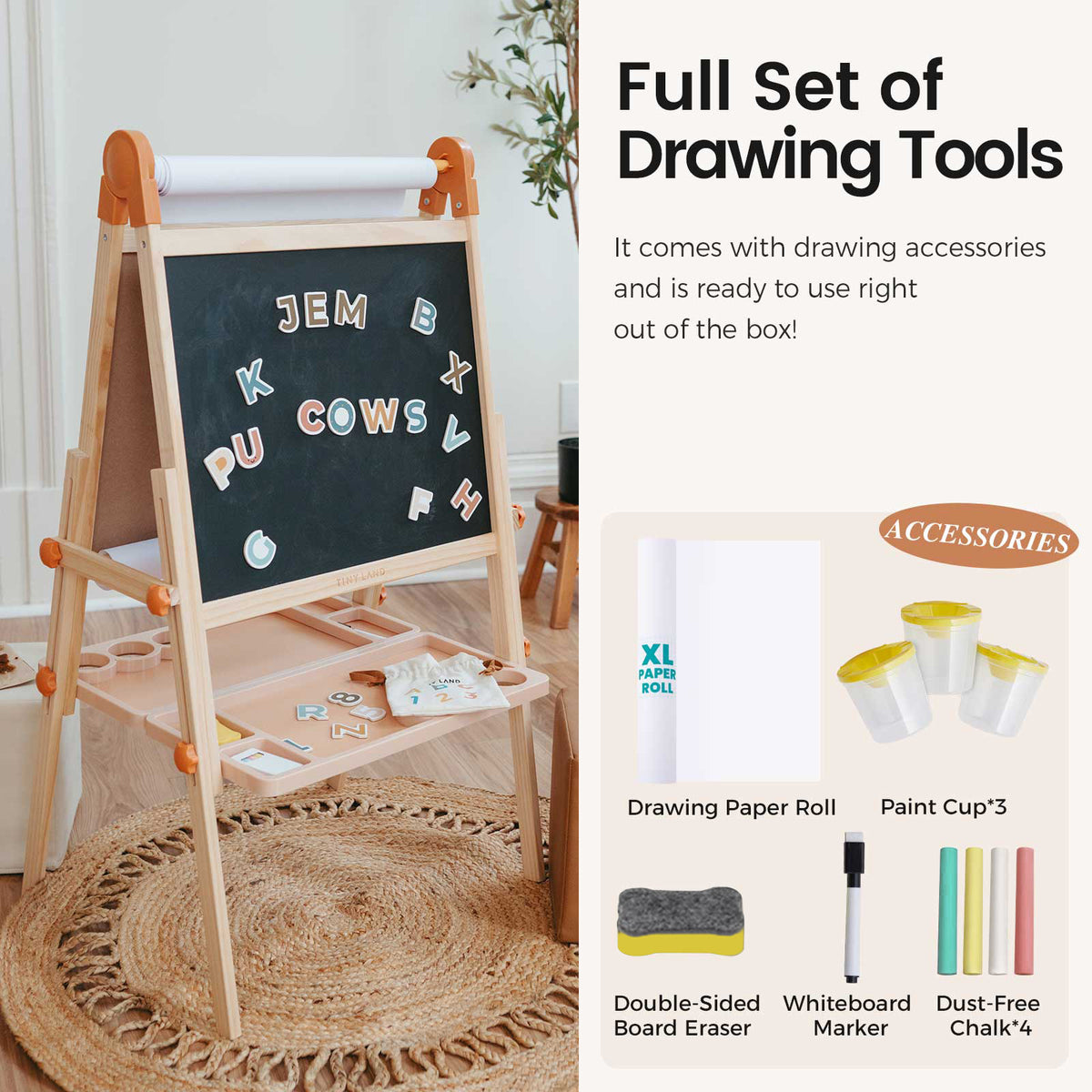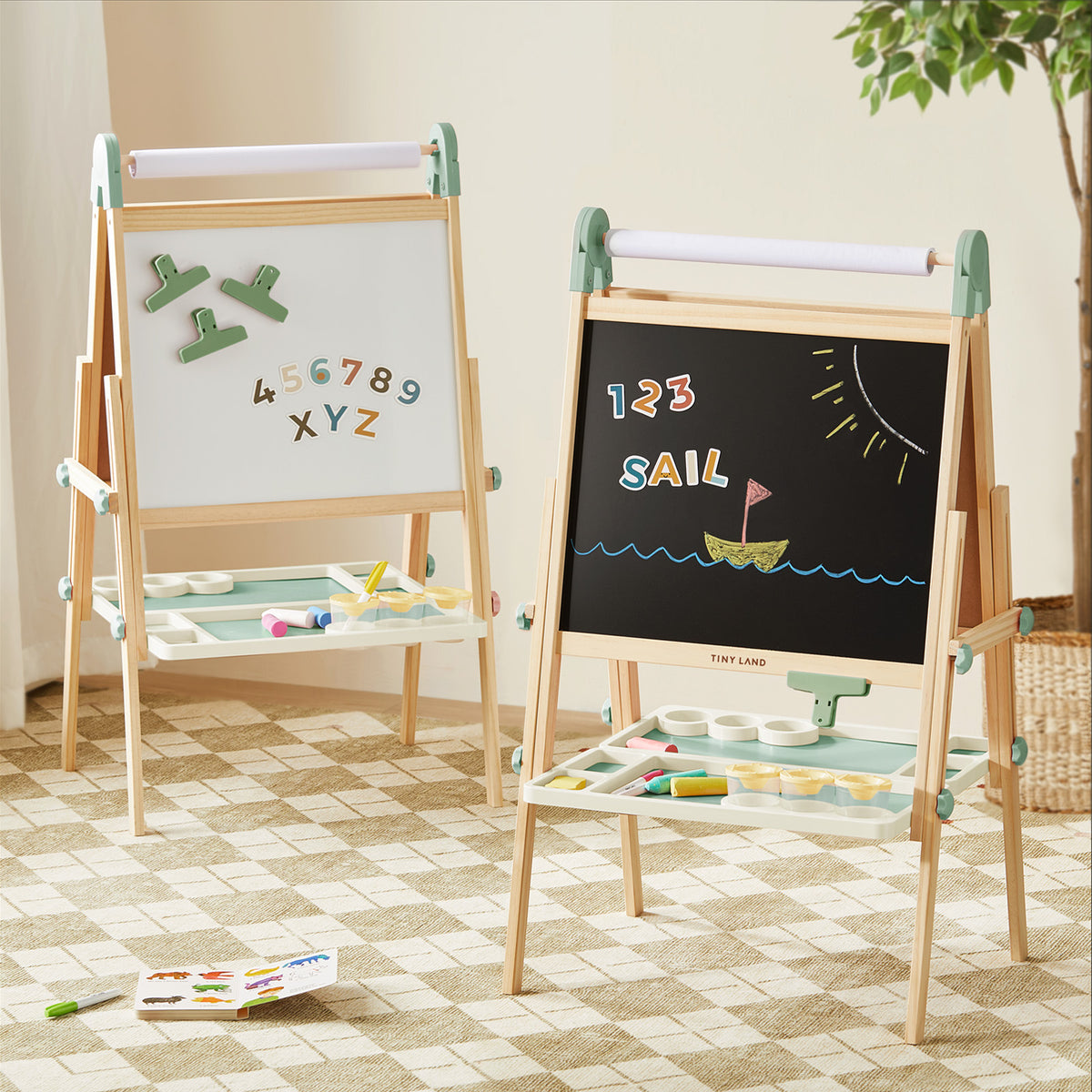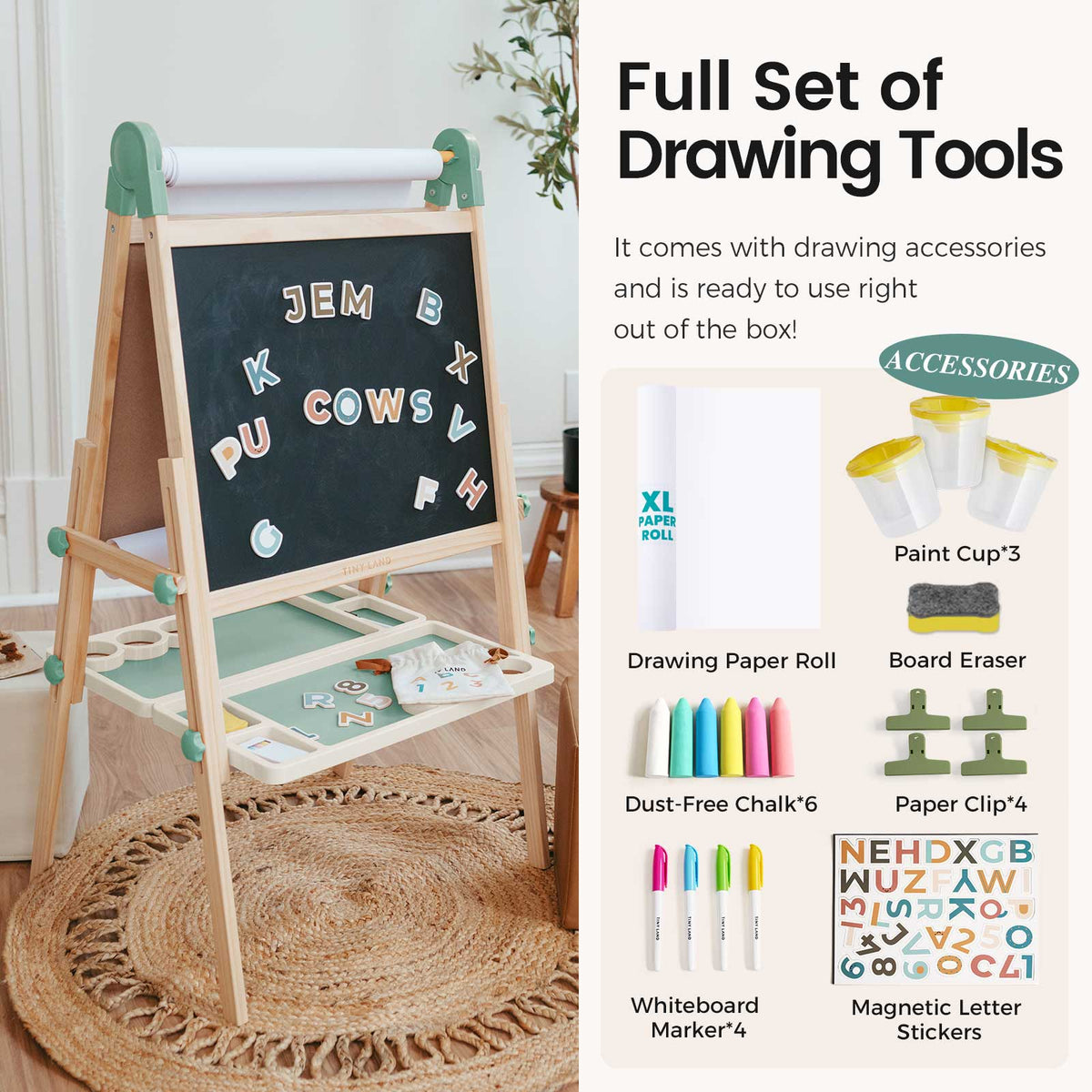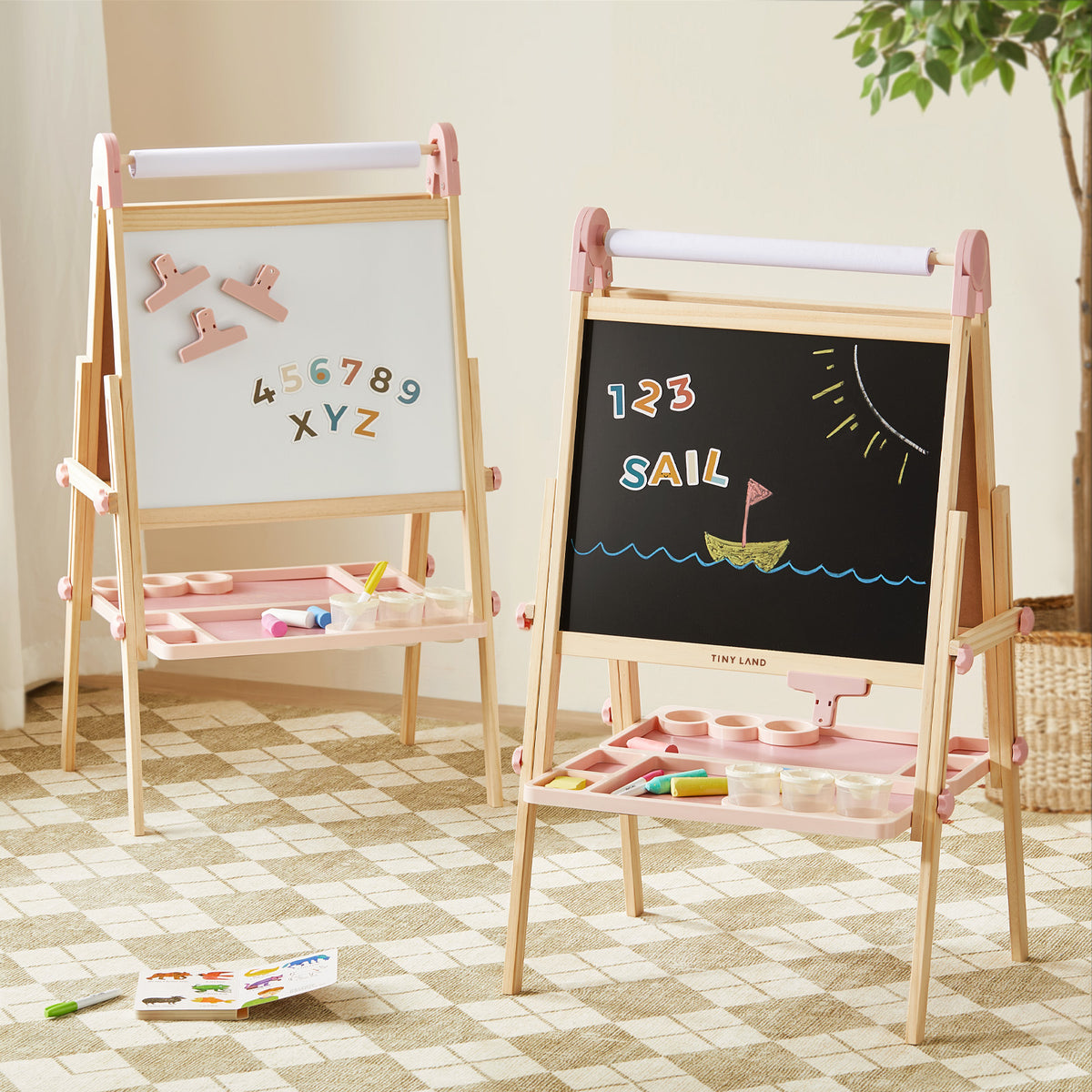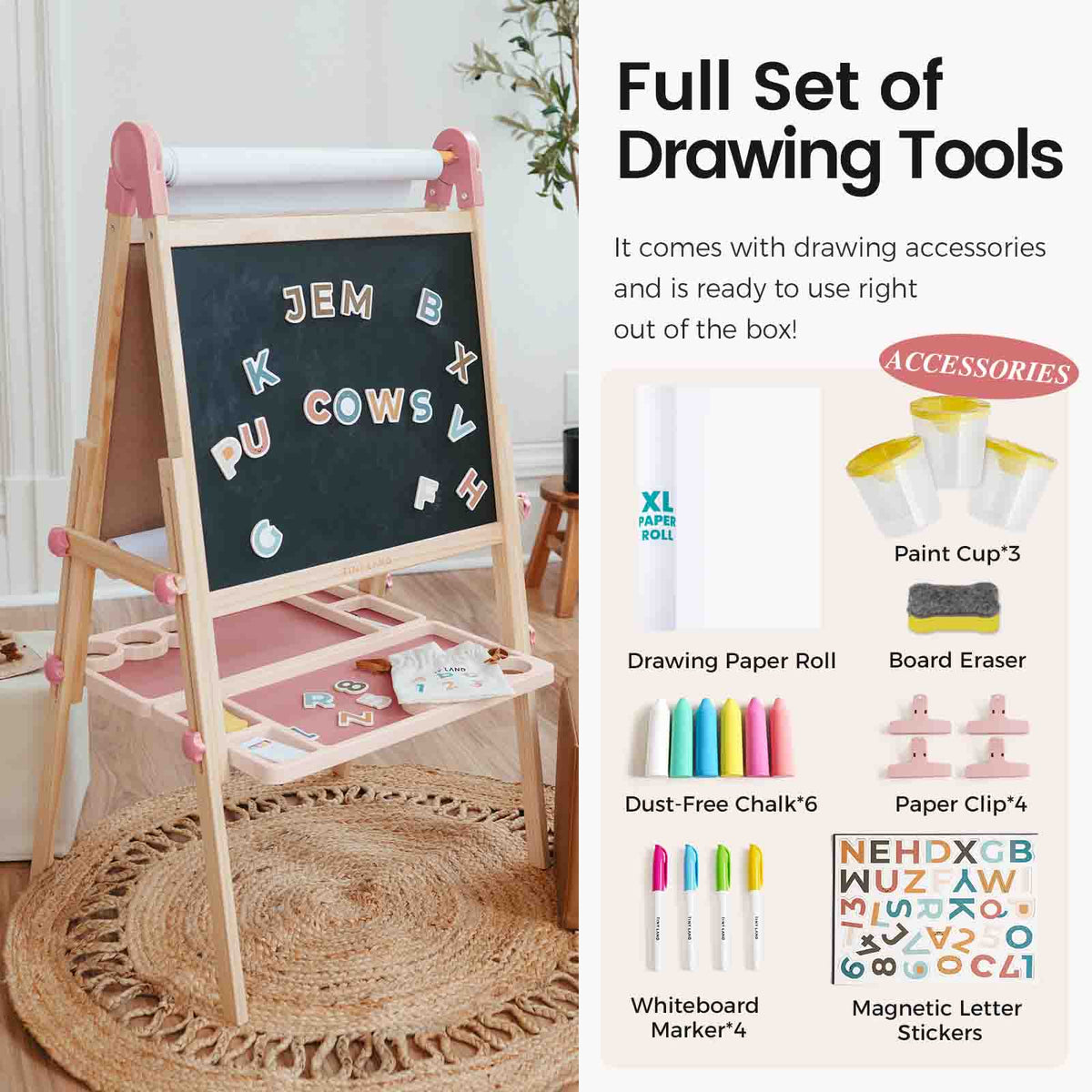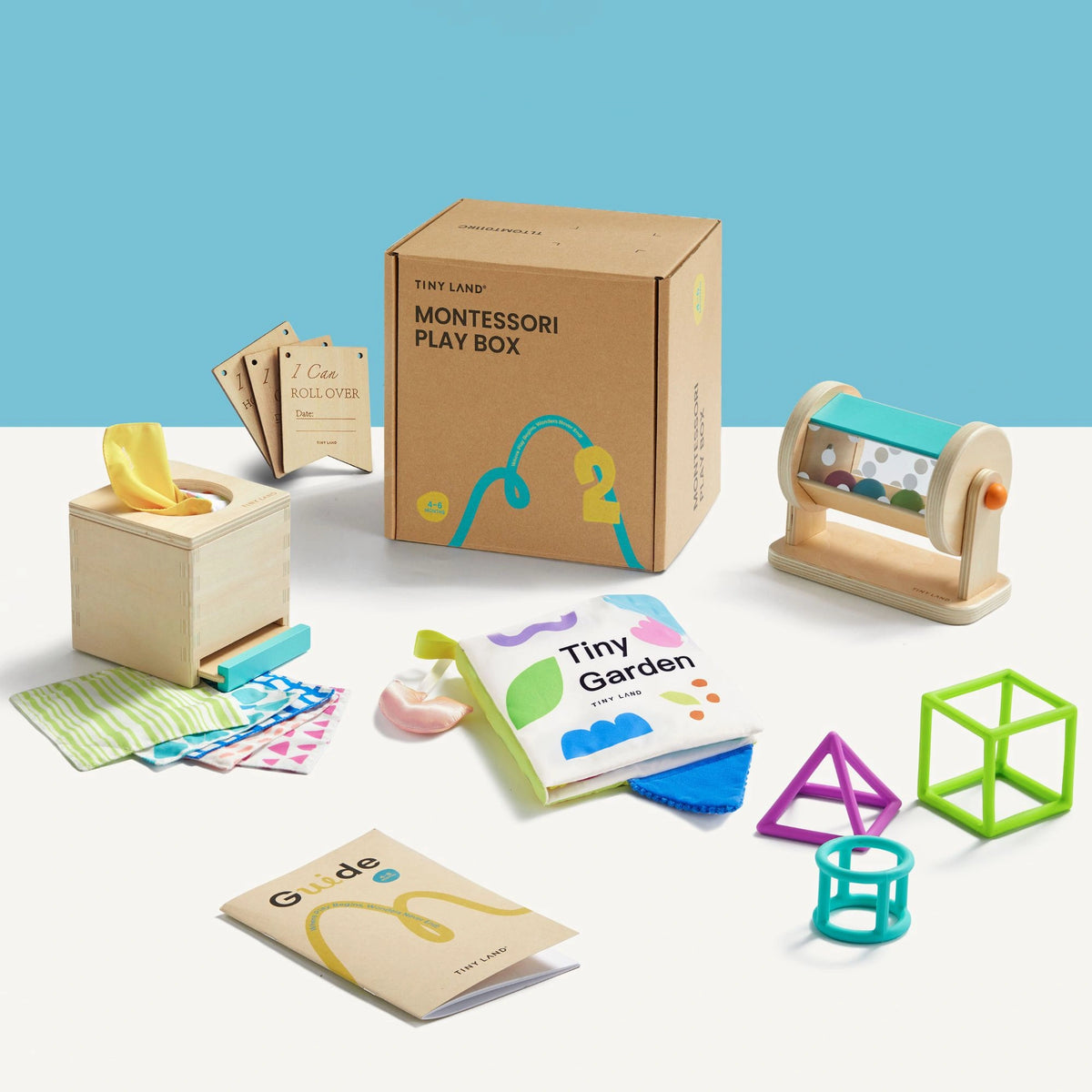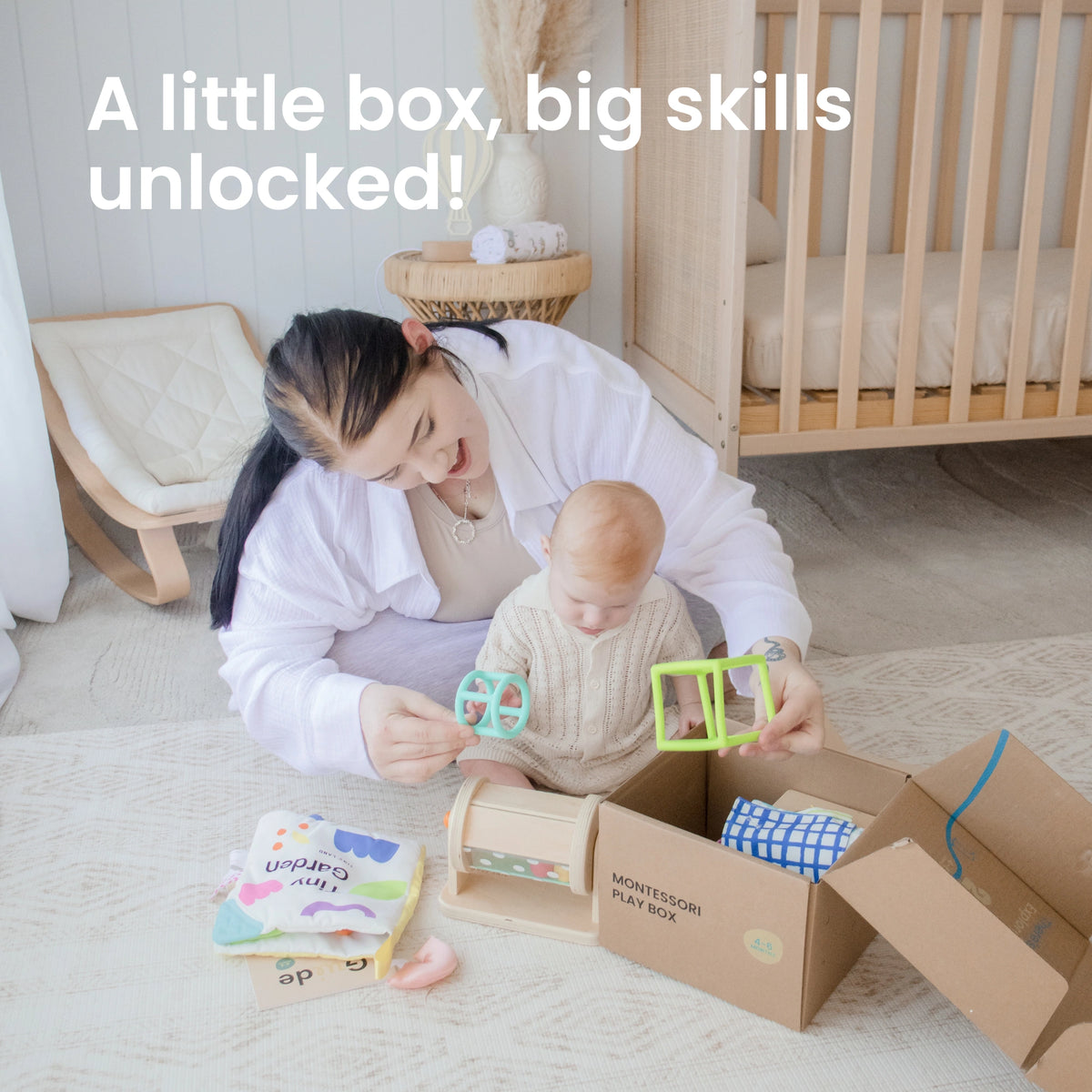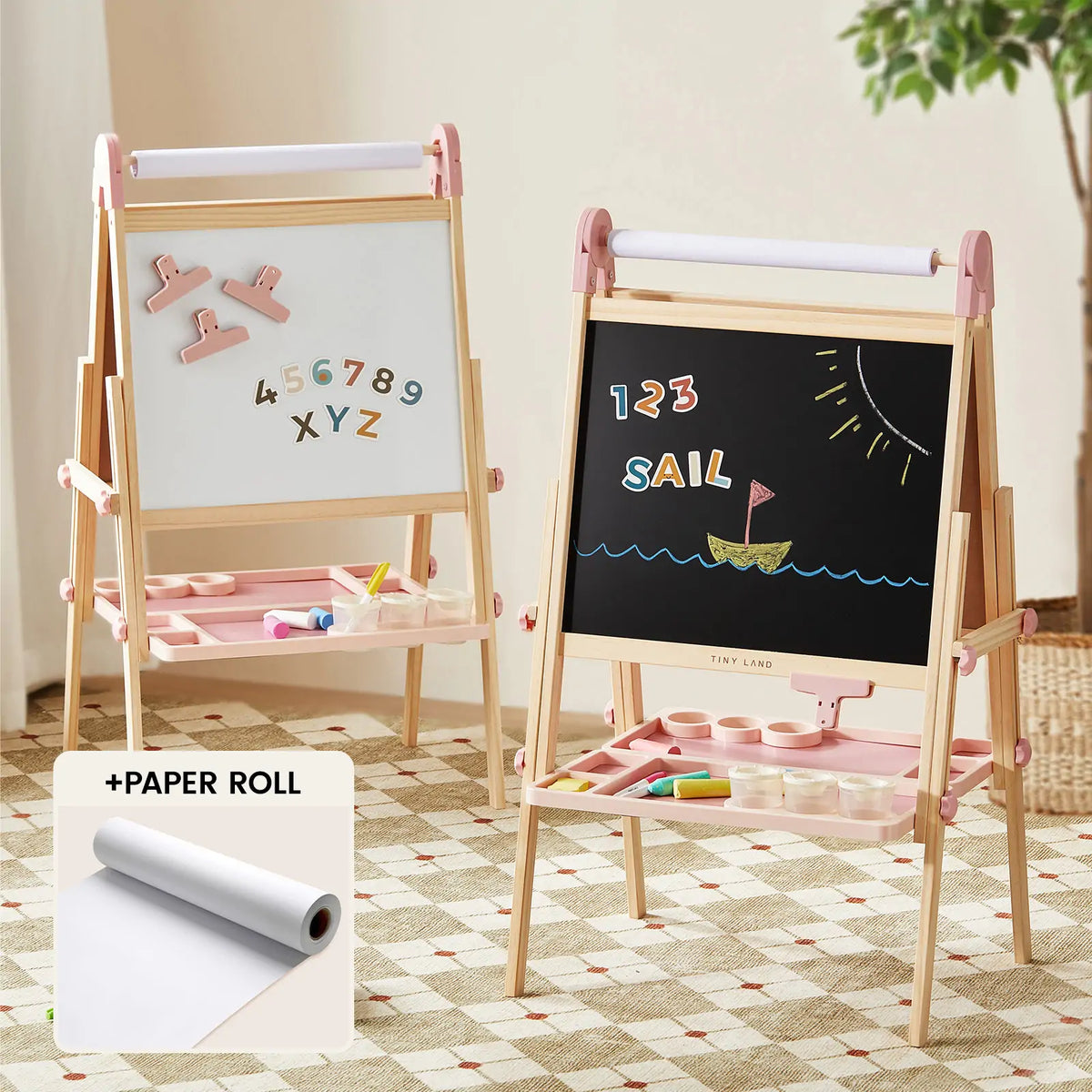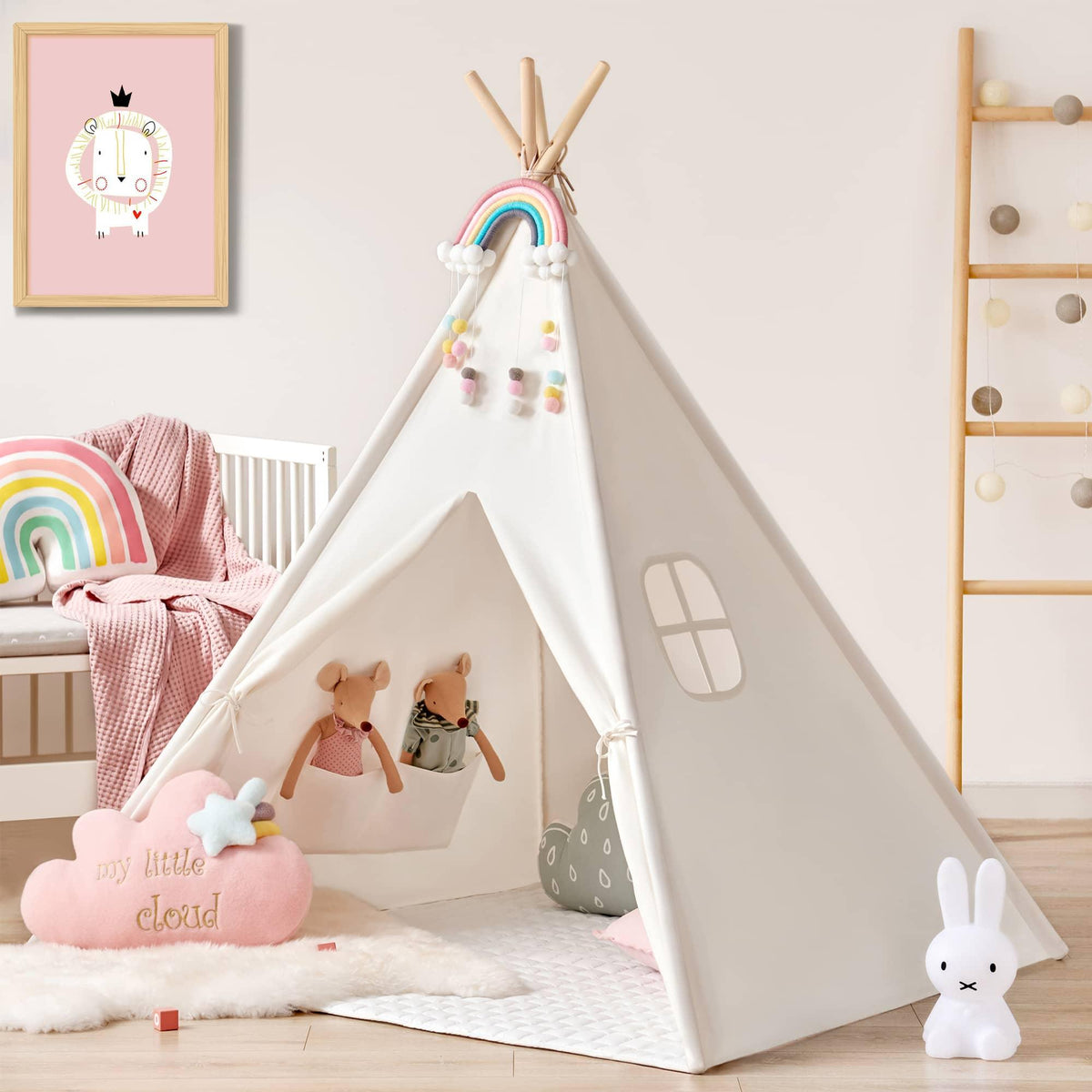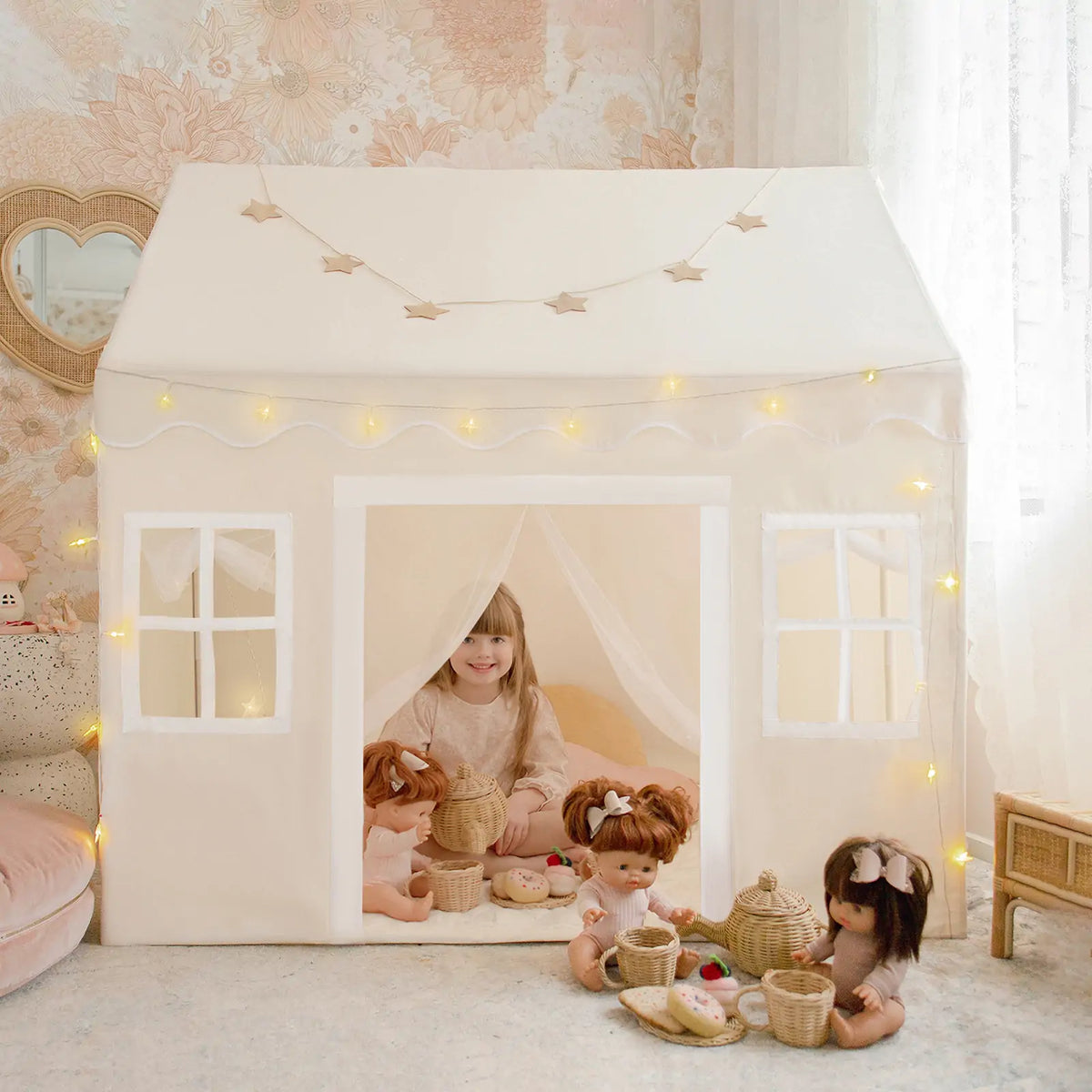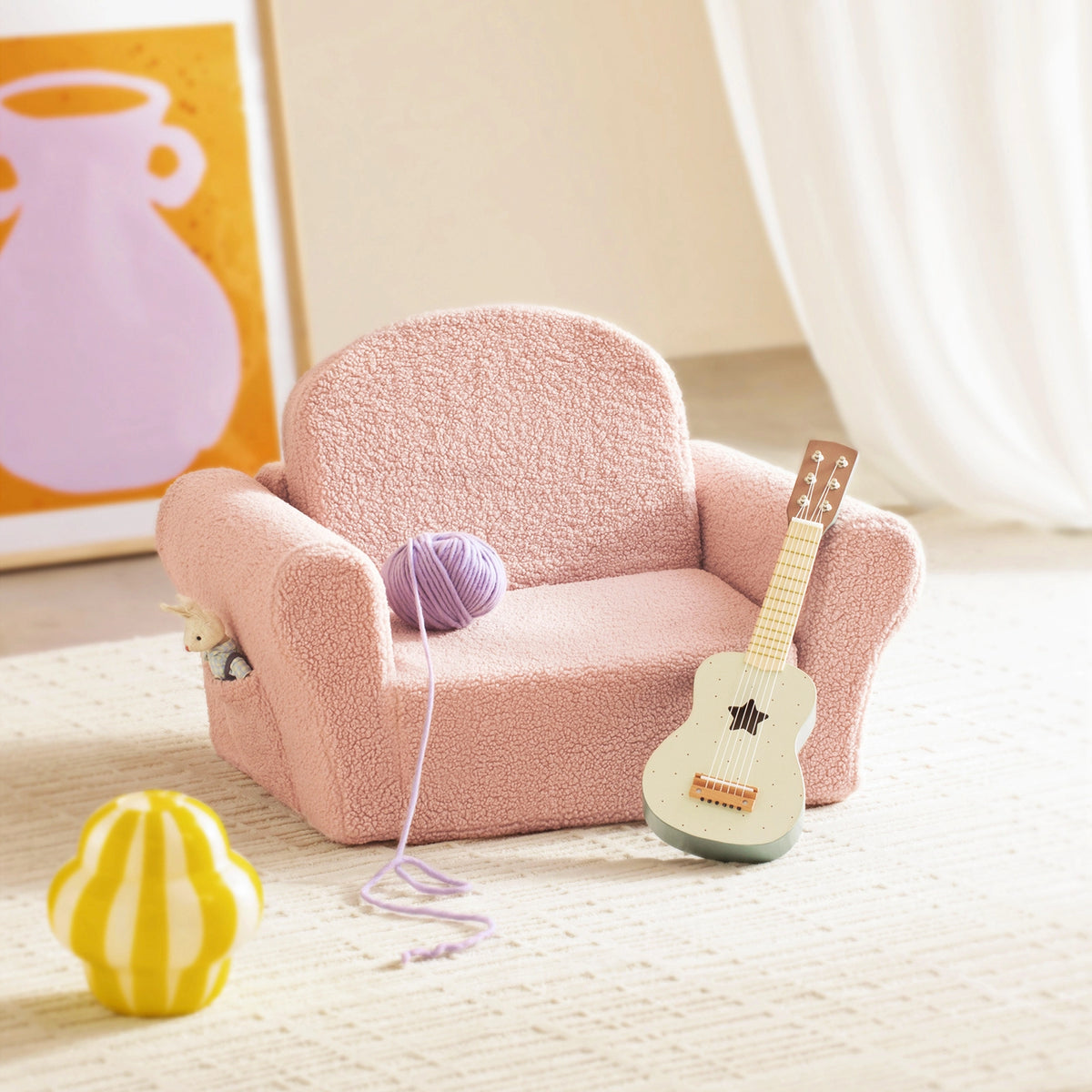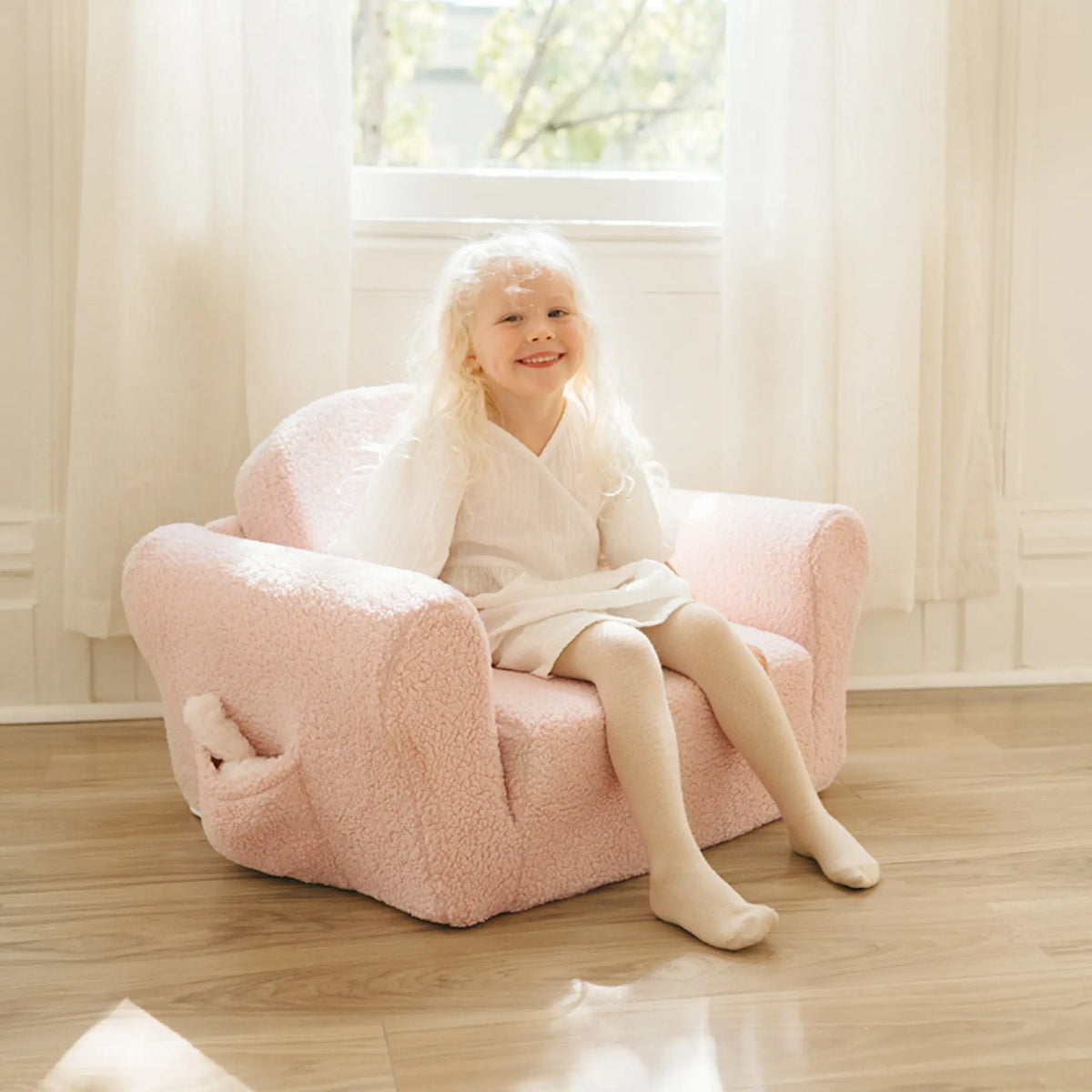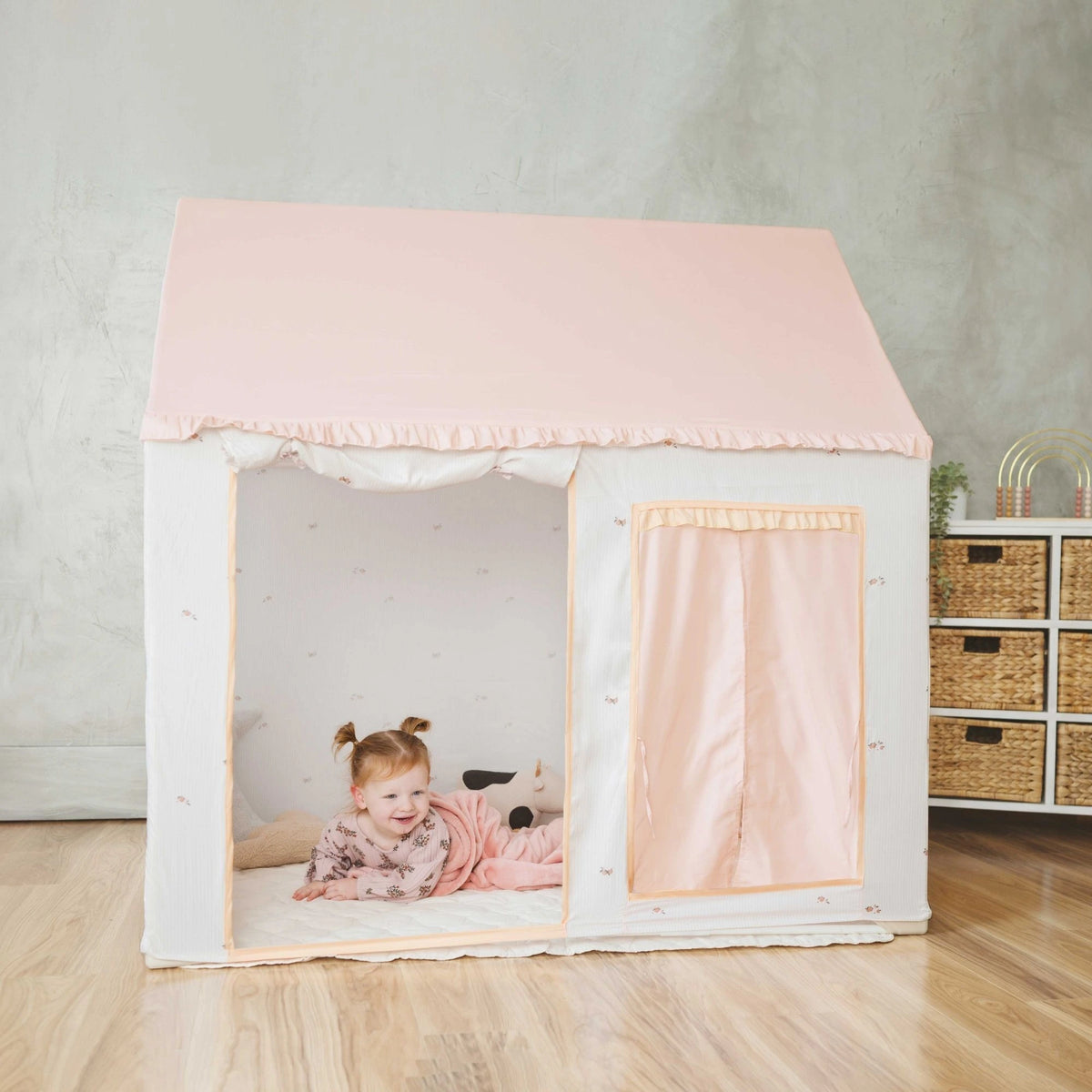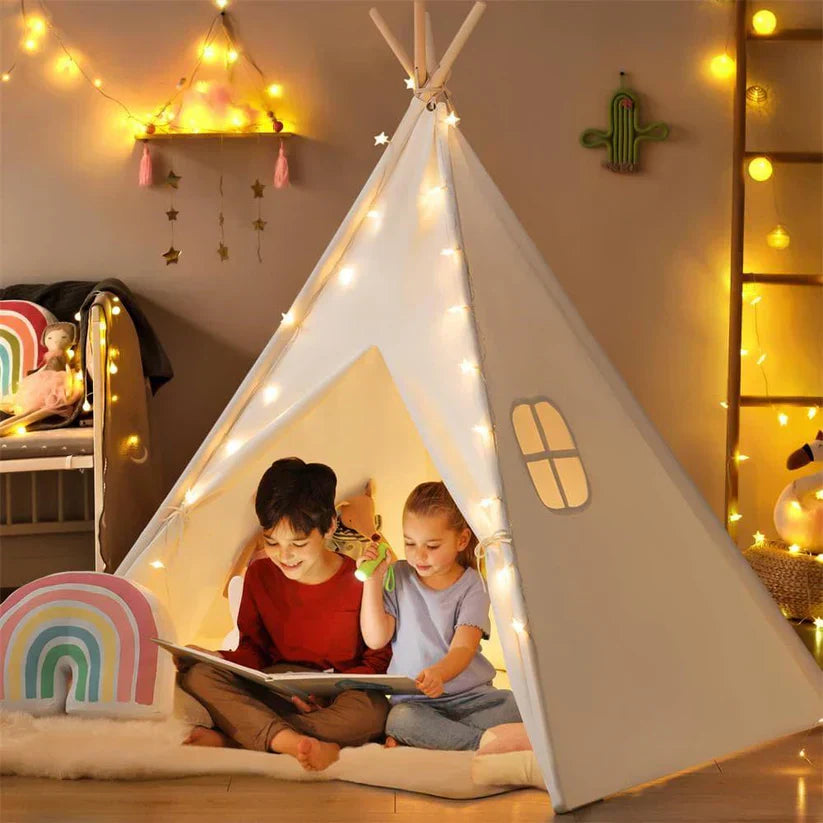Parenting is one of life’s greatest joys—but it also comes with daily challenges. Between work, errands, and family responsibilities, parents can’t always be beside their children every moment. That’s where independent play comes in.
Independent play gives children the freedom to explore, imagine, and learn on their own, while giving parents peace of mind (and sometimes, a well-deserved breather). It’s more than just keeping kids entertained—it’s a proven way to build confidence, creativity, and resilience.
At Tiny Land, we believe play is not just fun—it’s essential for a child’s growth. That’s why our toys are designed to spark imagination, encourage self-directed learning, and make independent play a natural part of everyday family life.
What Is Independent Play?
Independent play doesn’t mean leaving children completely on their own. Instead, it’s about creating a safe, engaging environment where kids can entertain themselves, make choices, and follow their imagination—without constant adult direction.
For children, independent play is a chance to build skills, confidence, and creativity. For parents, it’s reassurance that your child is happy, learning, and safe—even when you’re not actively leading their activities.
Why Independent Play Matters
When children have the freedom to play independently, they gain much more than just fun. Research in child development shows that self-directed play helps children:
--Develop emotional resilience: Handling small challenges alone builds patience, coping skills, and emotional regulation.
--Grow in confidence: Completing tasks by themselves fosters pride and a sense of autonomy.
--Boost creativity & problem-solving: Whether building towers or role-playing as a chef, kids practice critical thinking and imagination.
--Practice decision-making: Choosing what to play and how to play nurtures independence and curiosity.
--Prepare for real life: Pretend play mirrors daily routines, giving kids a safe way to explore real-world skills.
In short, independent play is the foundation of confidence, resilience, and joyful learning.

Independent Play by Age: How to Get Started
Every child develops differently, but here’s a simple guide to supporting independent play through the early years:
1–2 Years Old: First Steps
Independent play usually lasts only a few minutes. Children explore their surroundings mainly through sensory experiences and simple actions.
Typical activities:
Parent tips:
--stay nearby to provide a safe and reassuring environment
--start with very short sessions and gradually increase time
--follow your child’s interests
--encourage exploration without directing or correcting
--consistency helps build a positive habit
3–5 Years Old: Growing Confidence
Preschoolers can play independently for longer periods—often 15–30 minutes. Their play becomes more imaginative and structured.
Typical activities:
Parent tips:
--provide materials or ideas as inspiration, but let the child lead the play
--create a safe, cozy environment; follow the child’s curiosity
--encourage rather than direct, avoiding “fixing” what they are doing
--gradually increase playtime and maintain a consistent routine
5+ Years Old: Self-Directed Fun
Older children can sustain play for extended periods and invent detailed scenarios. Independent play at this stage strengthens problem-solving, focus, and social imagination.
Typical activities:
--organizing complex role-play
--planning and building structures
--creating stories or games
--drawing or other creative expression
Parent tips:
--step back and observe
--offer guidance only when needed
--provide a safe space and support autonomy
--follow their interests and encourage creativity
--consistency matters—regular play helps develop a lasting habit
Tiny Land Toys That Spark Independent Play
At Tiny Land, our mission is to design toys that inspire imagination, confidence, and joyful learning. Our playsets are thoughtfully crafted to keep kids engaged, safe, and happily absorbed in play.
Our Most Loved Toys for Independent Play:
Dollhouse & Garage Set: Let children dive into arranging furniture, parking cars, and acting out little stories all by themselves. They decide what happens next, building their own tiny world and getting fully absorbed. (Supports storytelling and problem-solving.)
Play Kitchen & Food Set: Allow kids grab spoons, stir pretend soup, and experiment with ingredients—choosing what to “cook” and how. The endless combinations keep them engaged and excited to come back for more. (Encourages imagination and autonomy.)
Kids Tent: Provide a cozy nook which instantly becomes their personal hideaway. Kids love crawling in, bringing toys, or reading quietly, enjoying the feeling of controlling their own space. (Fosters focus and calm.)
Crawl Tunnel with Ball Pit: With twists, turns, and a ball pit to crawl, climb, and explore, your child can choose their own path, discover surprises at every corner, and enjoy the excitement at their own pace—each element invites them to keep playing independently. (Builds coordination and exploration skills.)
Art Easel & Supplies: Immersed in their own creations, children are drawn to the blank paper and colorful paints, which let them freely explore and express any idea they imagine. The open-ended setup—no right or wrong, endless possibilities—keeps them engaged and wanting to play on their own. (Promotes self-expression and sustained focus.)
Why Tiny Land?
Unlike ordinary toys, Tiny Land playsets are designed to:
--Encourage open-ended play that lasts
--Provide safe, high-quality materials parents trust
--Blend seamlessly into family homes with thoughtful, child-friendly design
Independent Play = Happy Kids, Happy Parents
Independent play isn’t just a way to keep kids busy—it’s a powerful tool for their emotional, cognitive, and social growth. It gives children the freedom to imagine, create, and discover themselves, while giving parents reassurance that their little ones are thriving.
At Tiny Land, we design every toy with this balance in mind. From dollhouses and kitchens to tents and tunnels, our playsets are thoughtfully crafted to inspire independent play, nurture growth, and bring joy to every home.
Explore our collection today and give your child the gift of confidence, creativity, and independence—with Tiny Land®.



